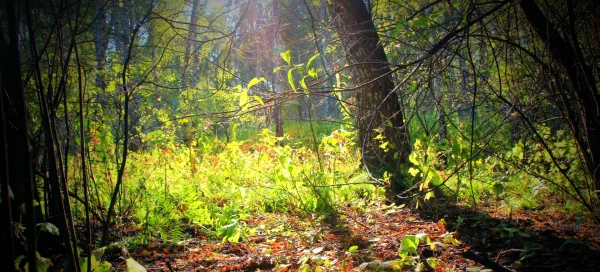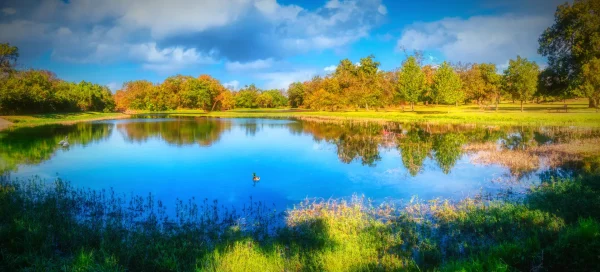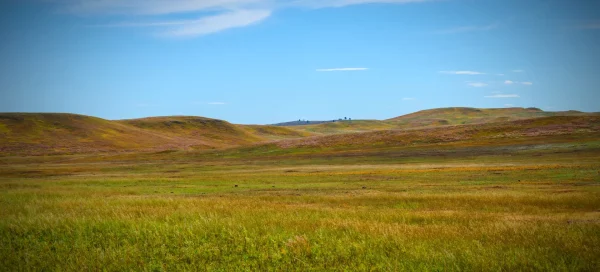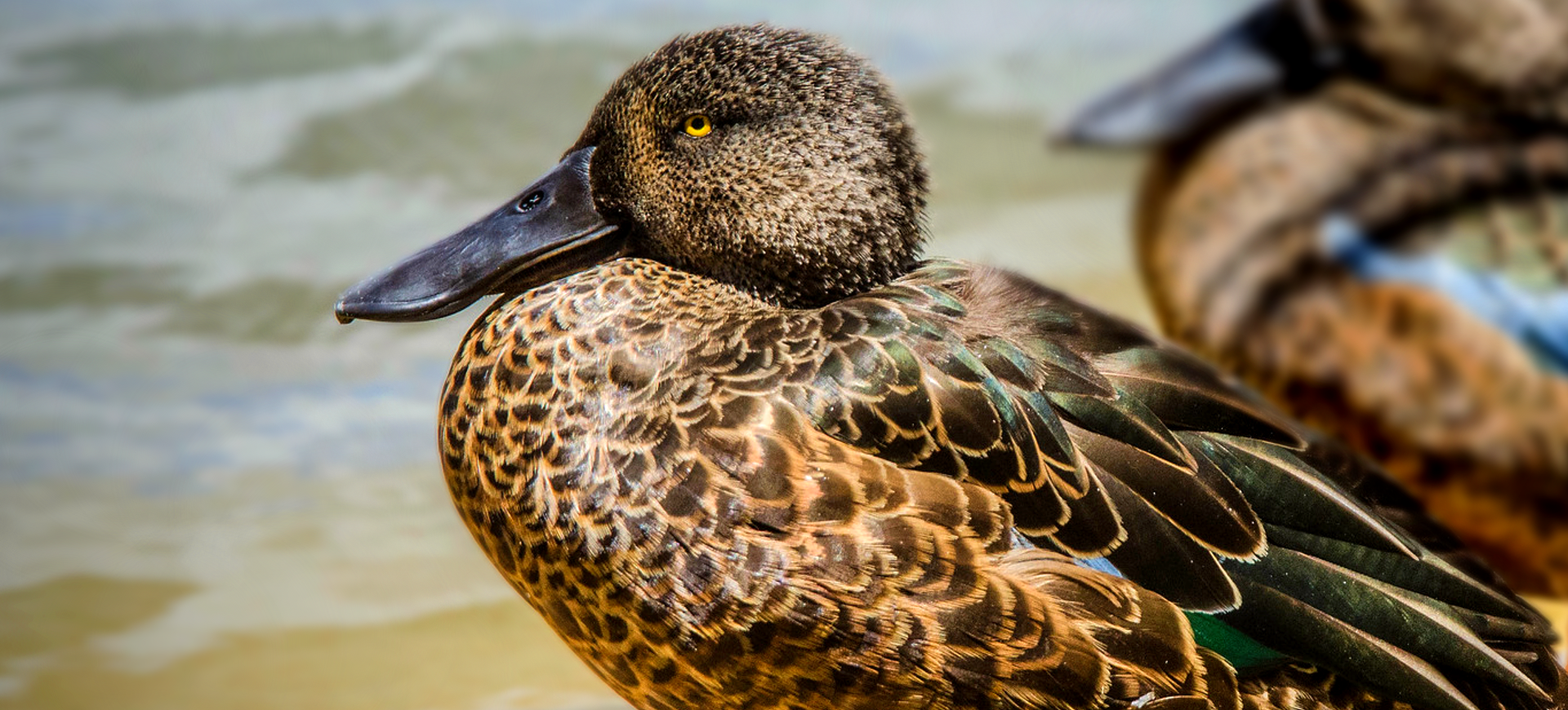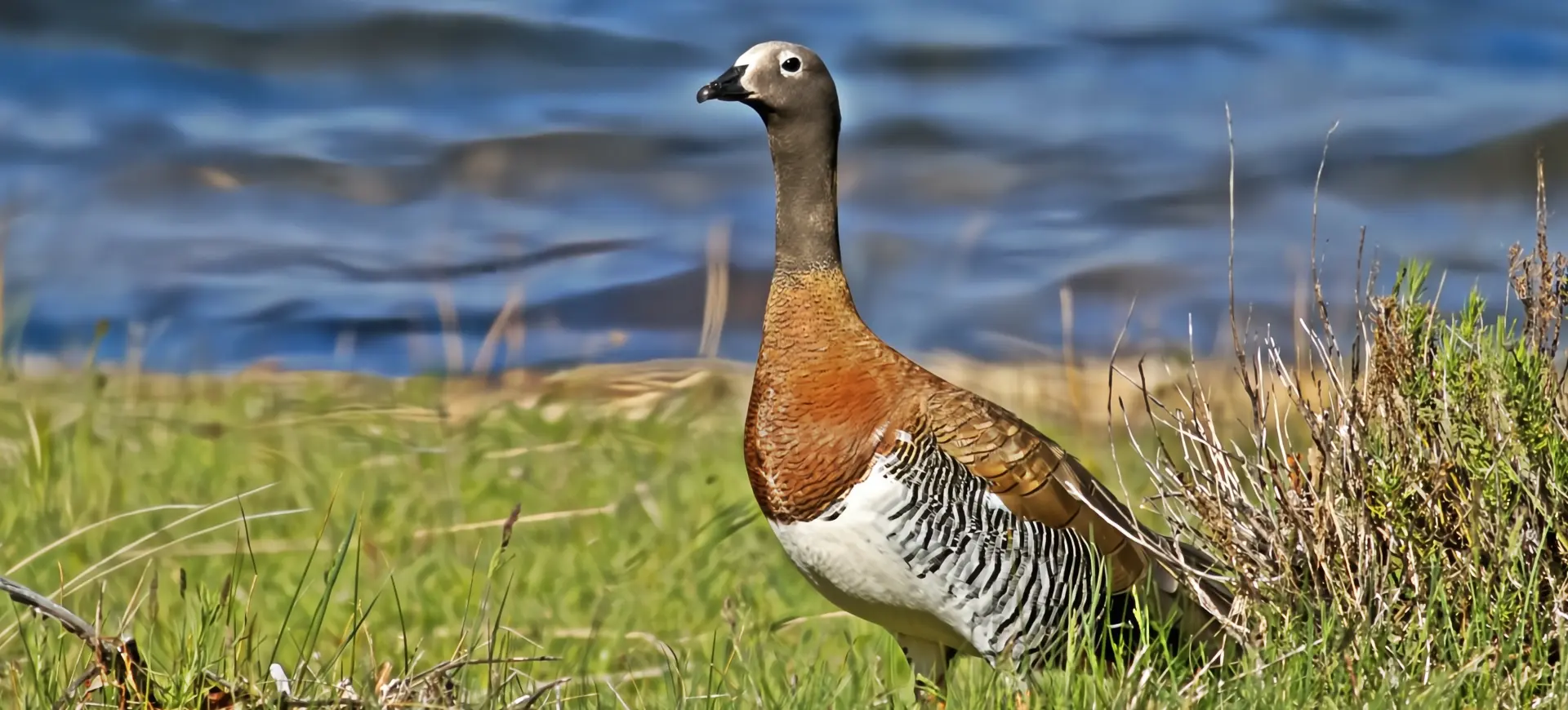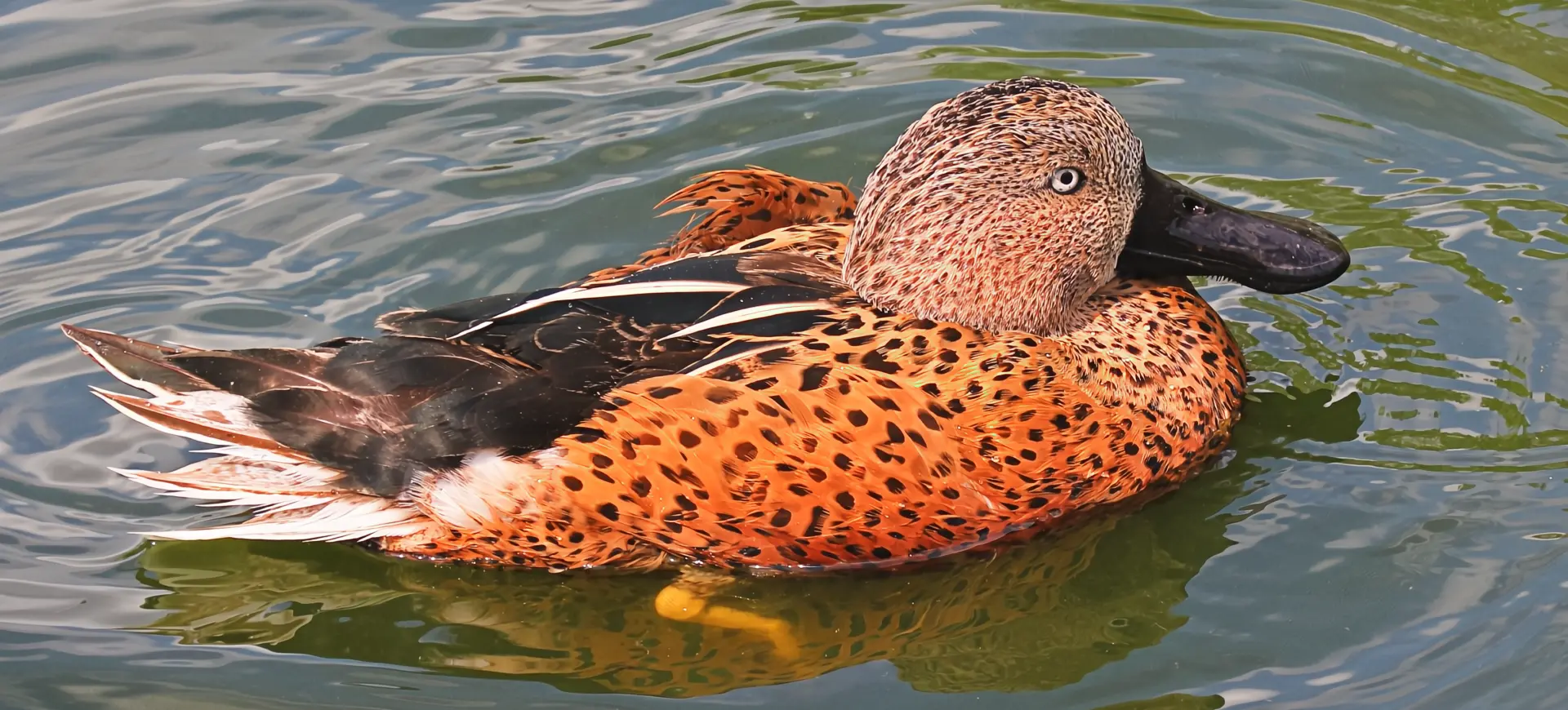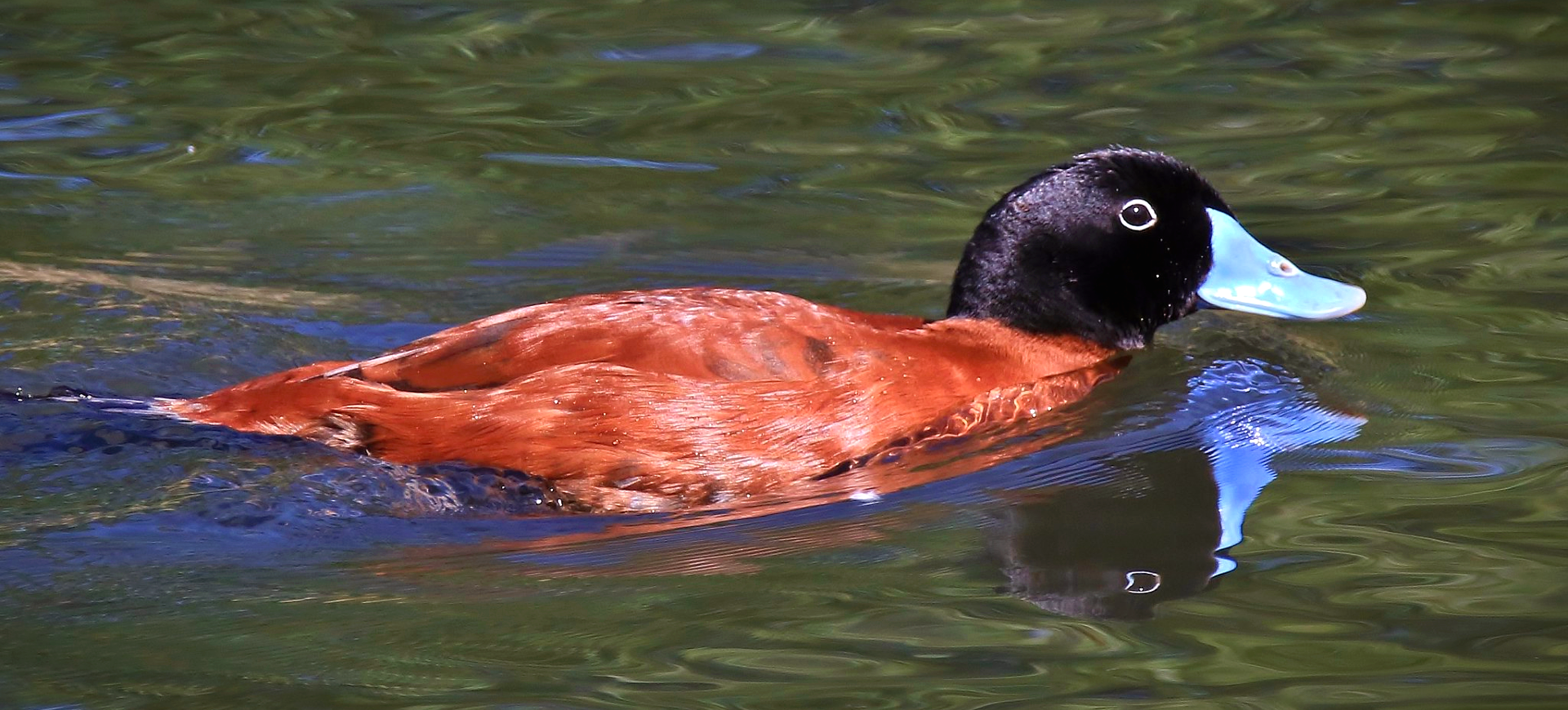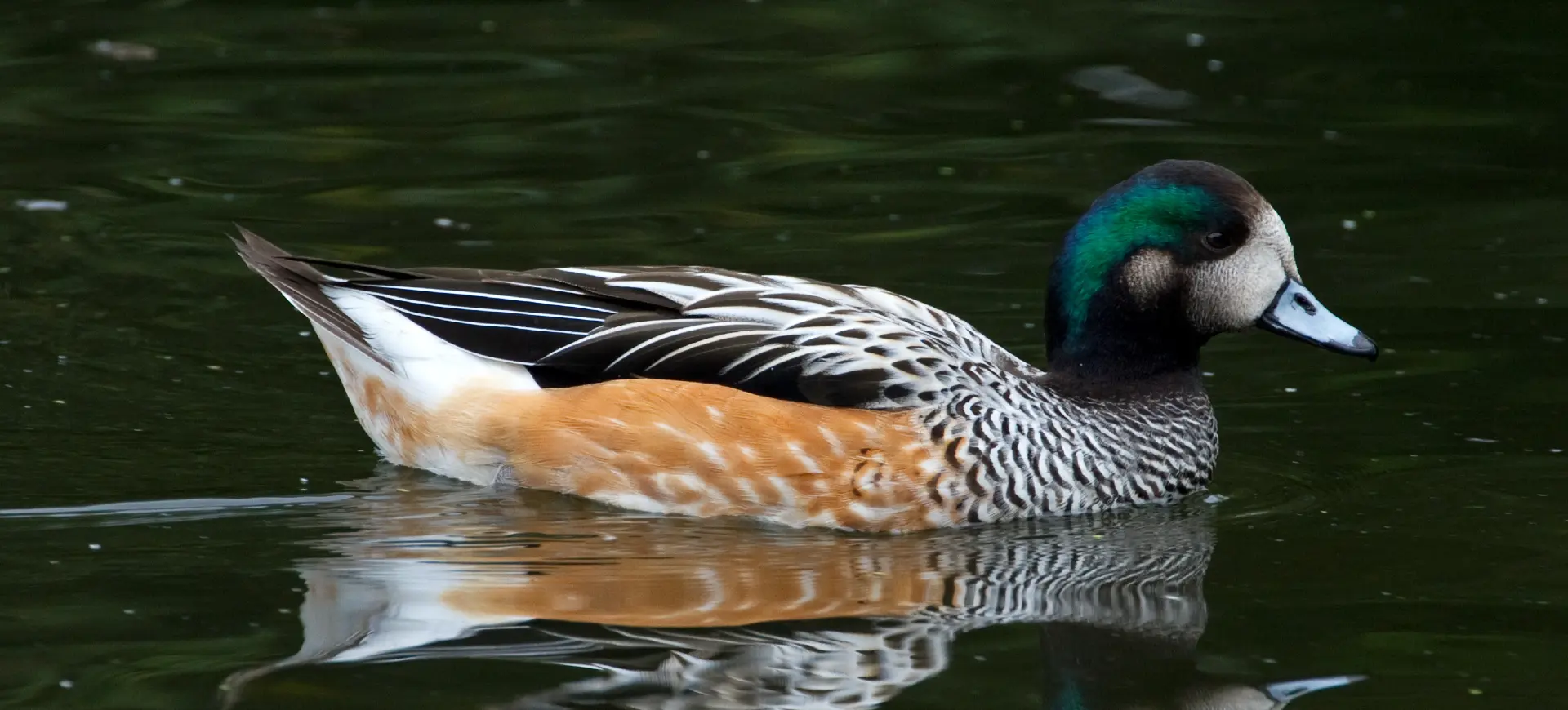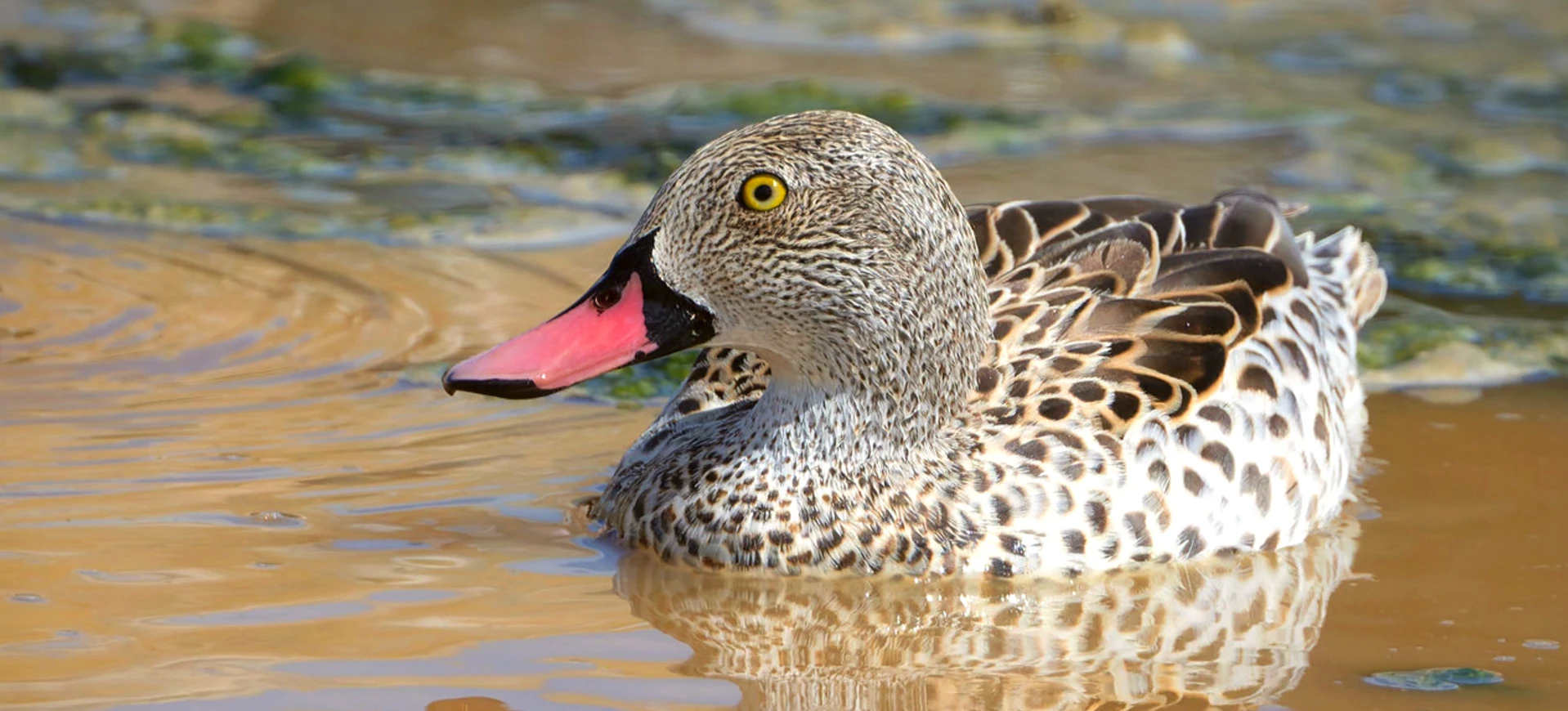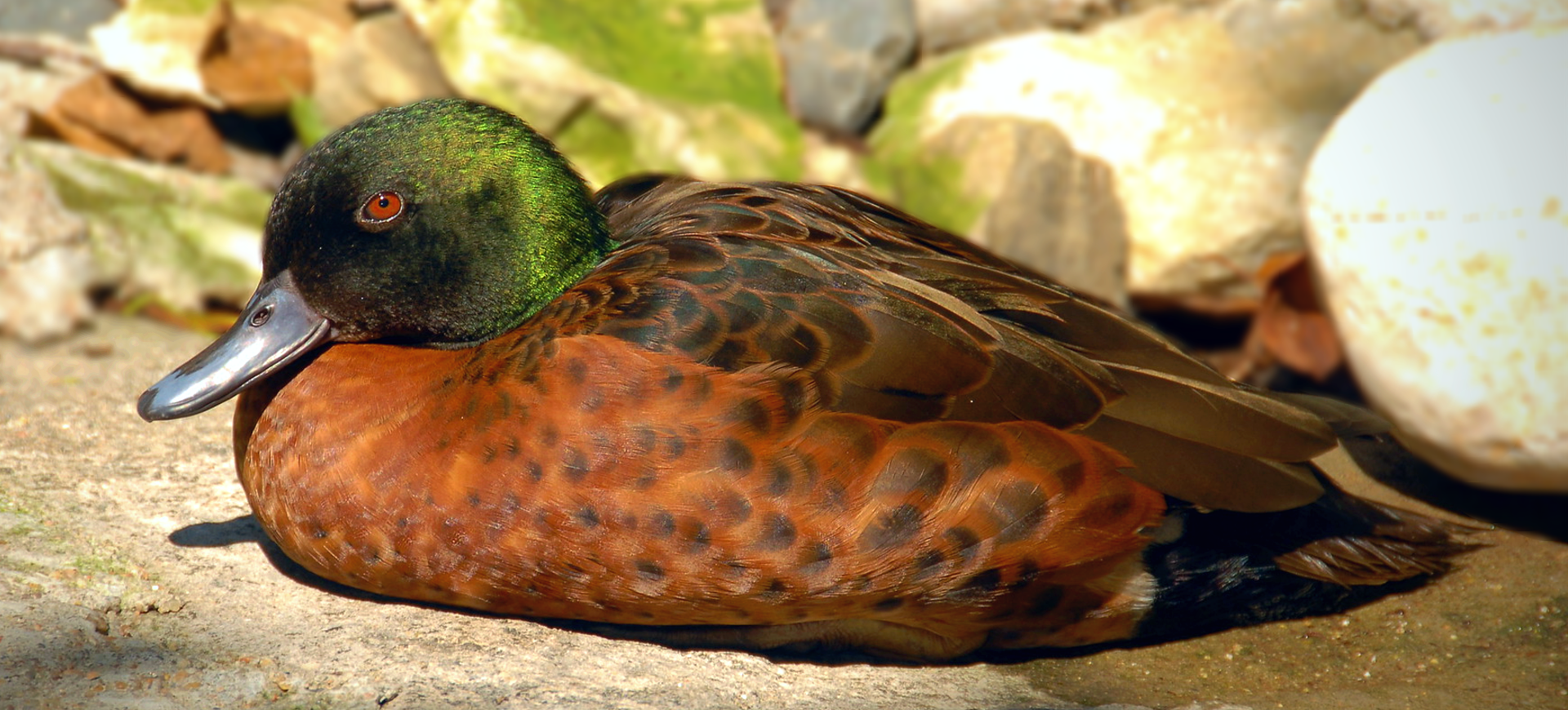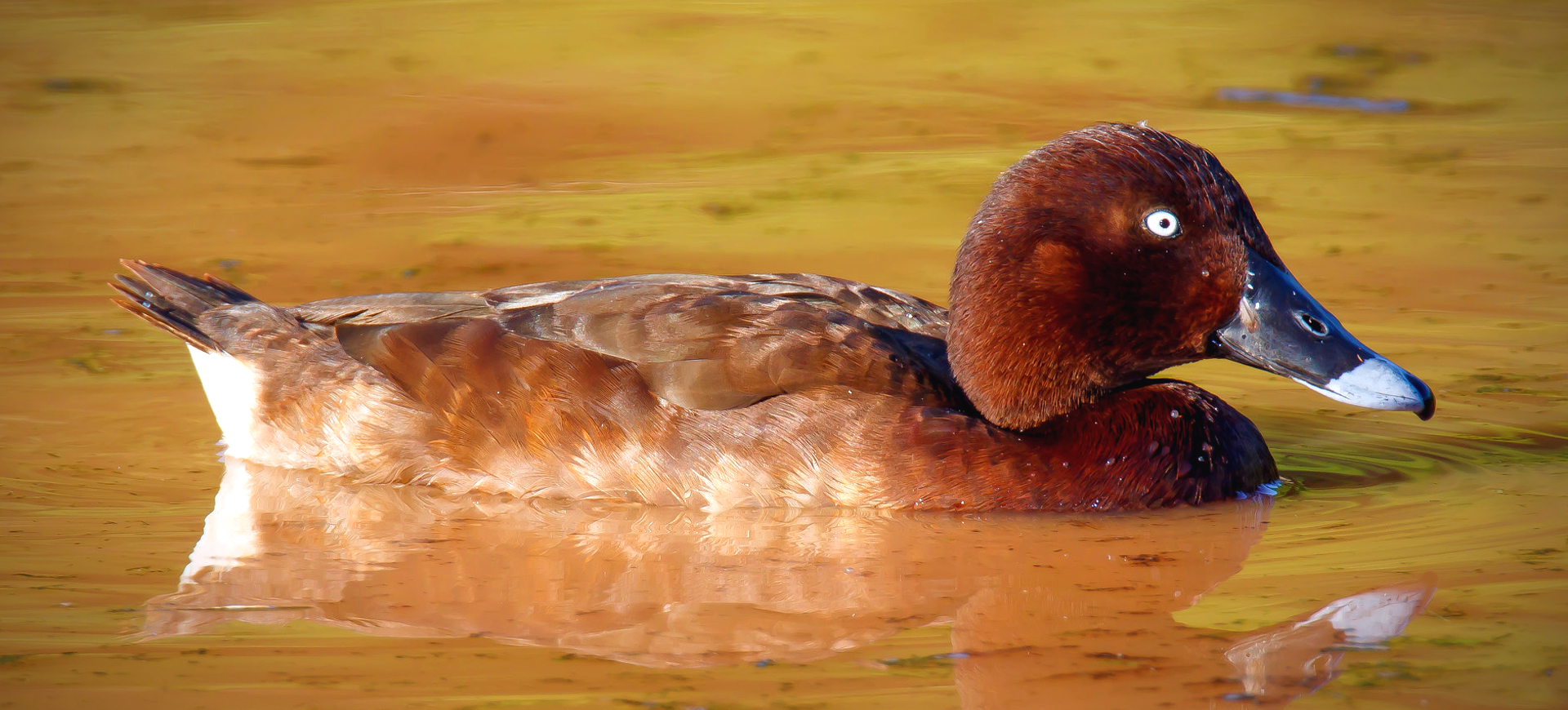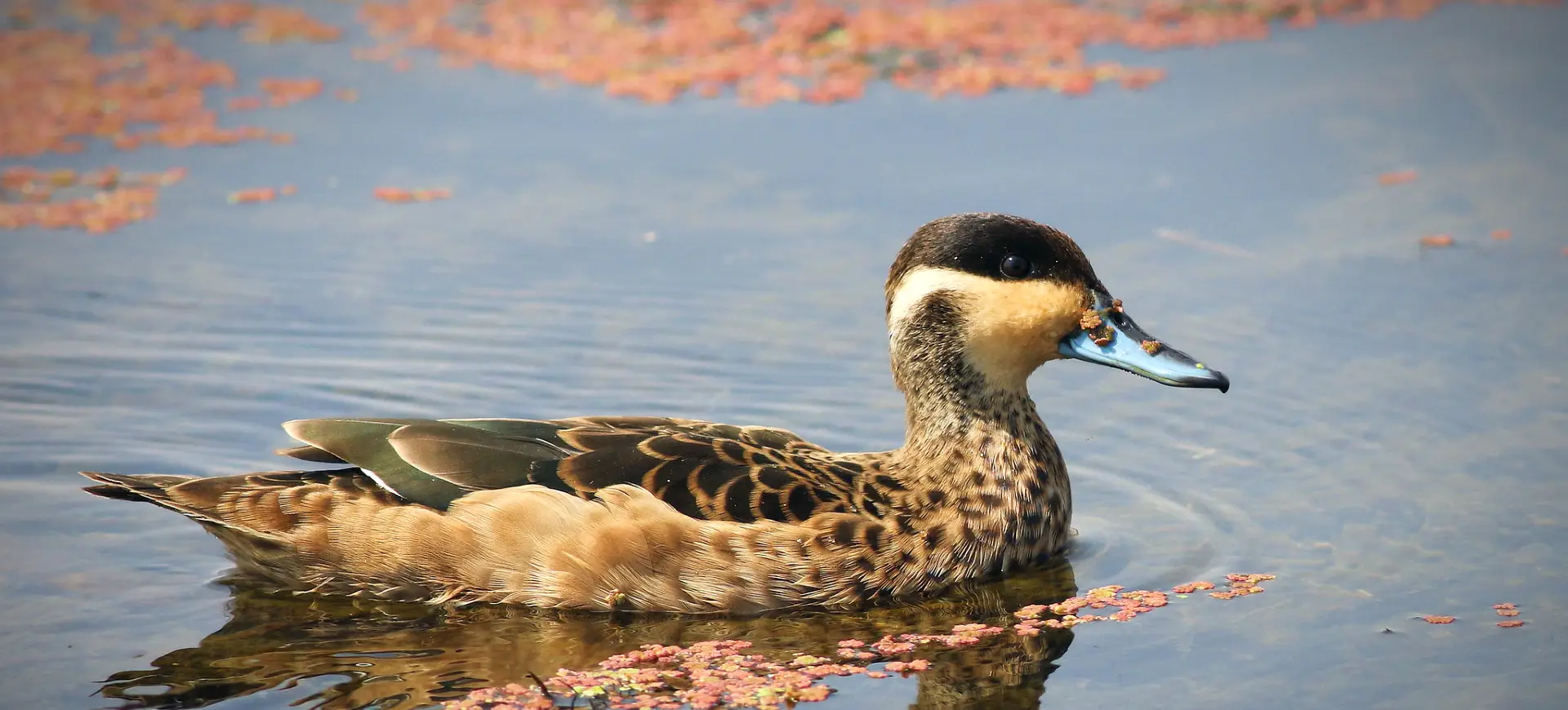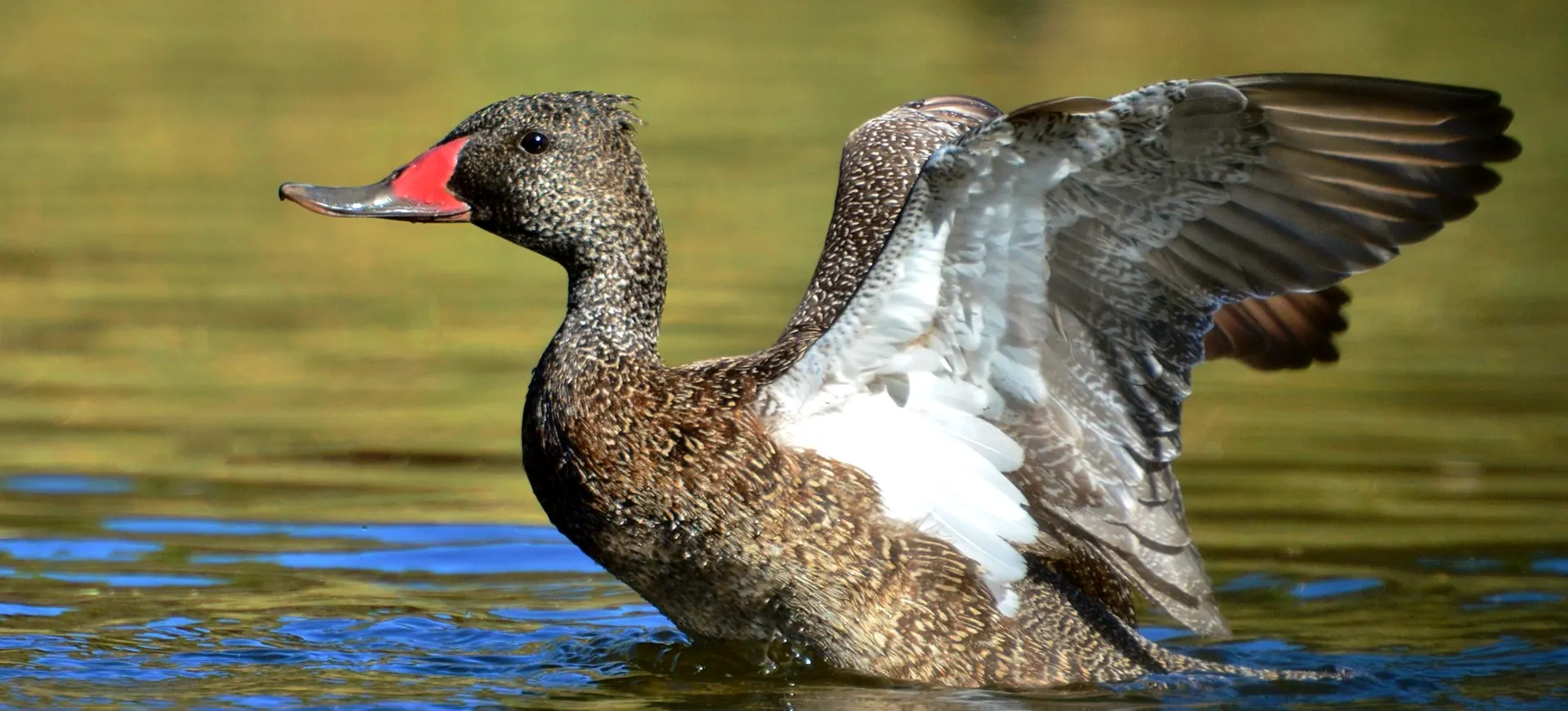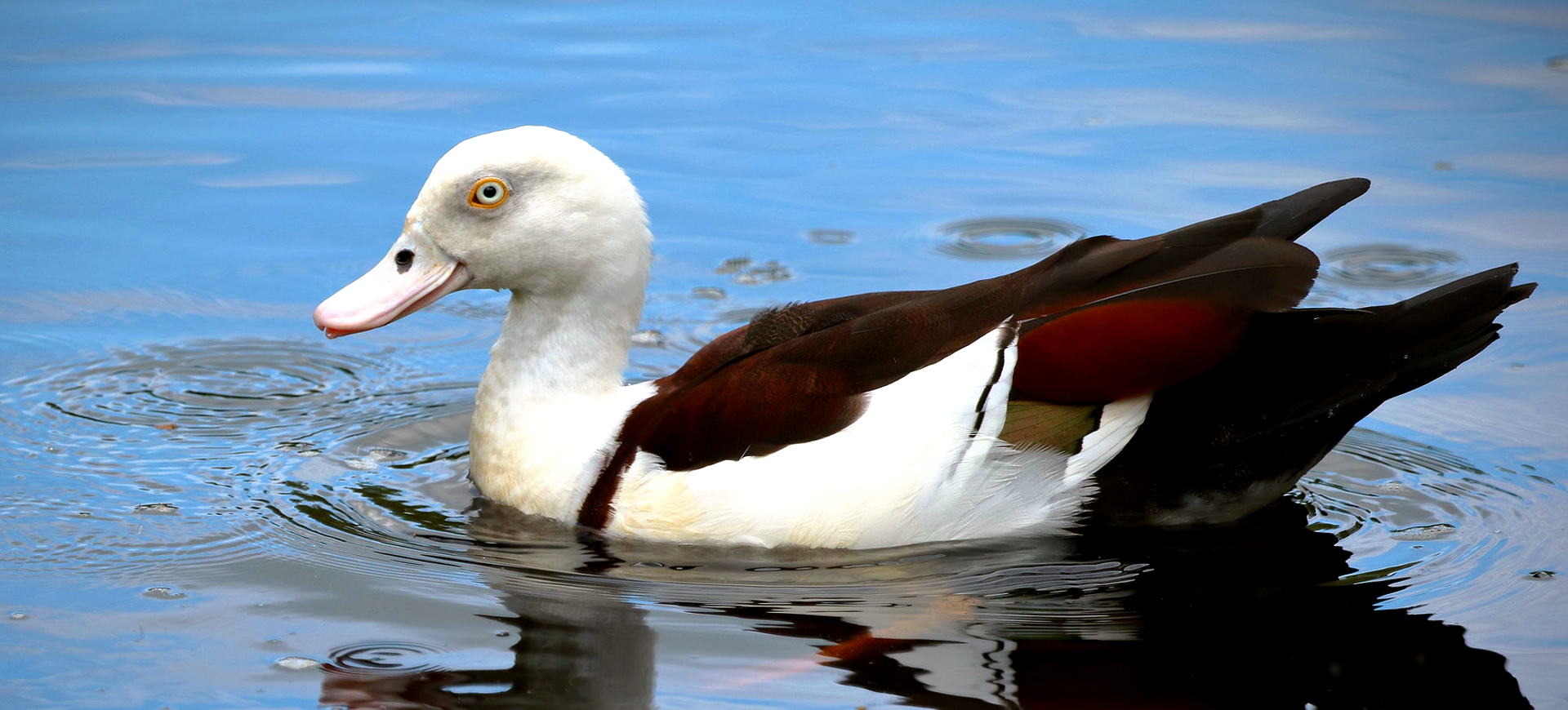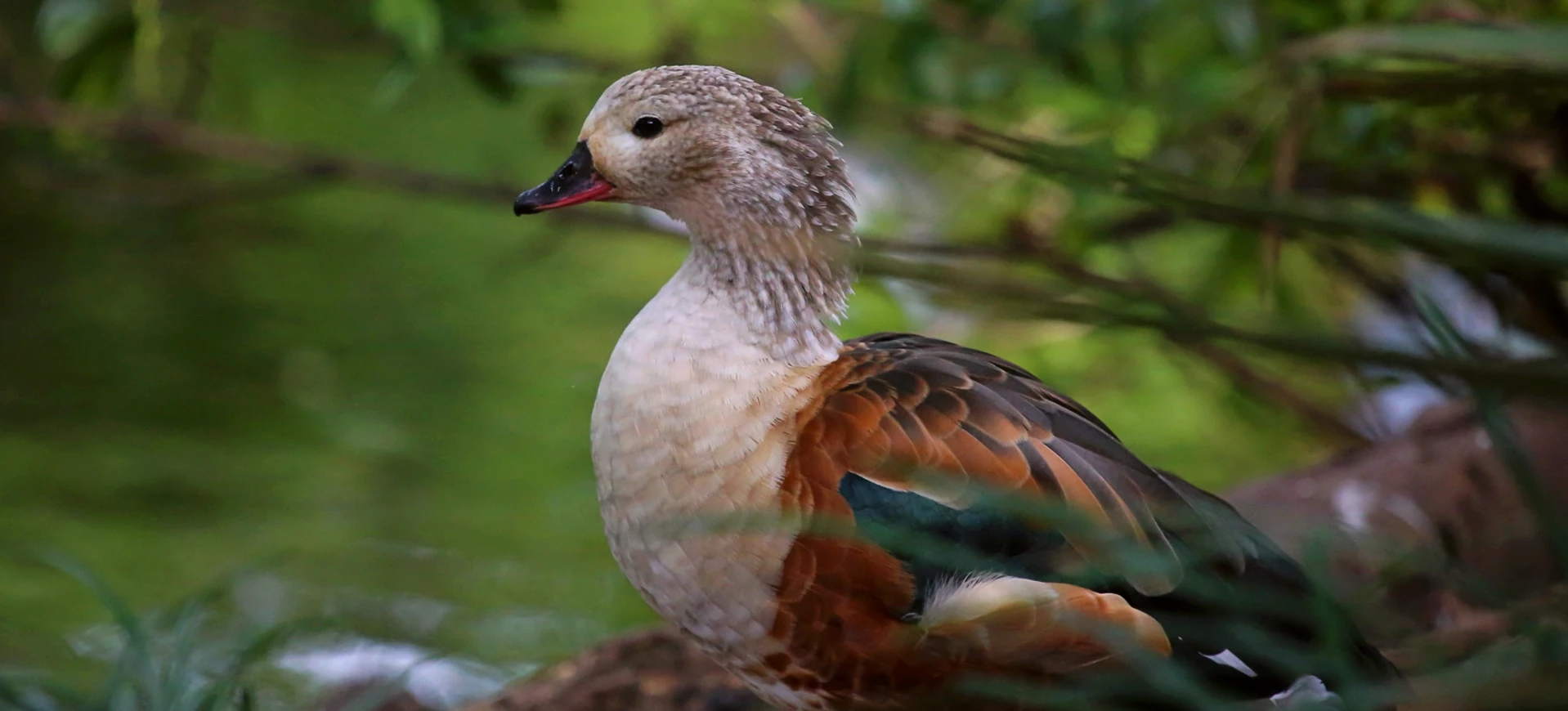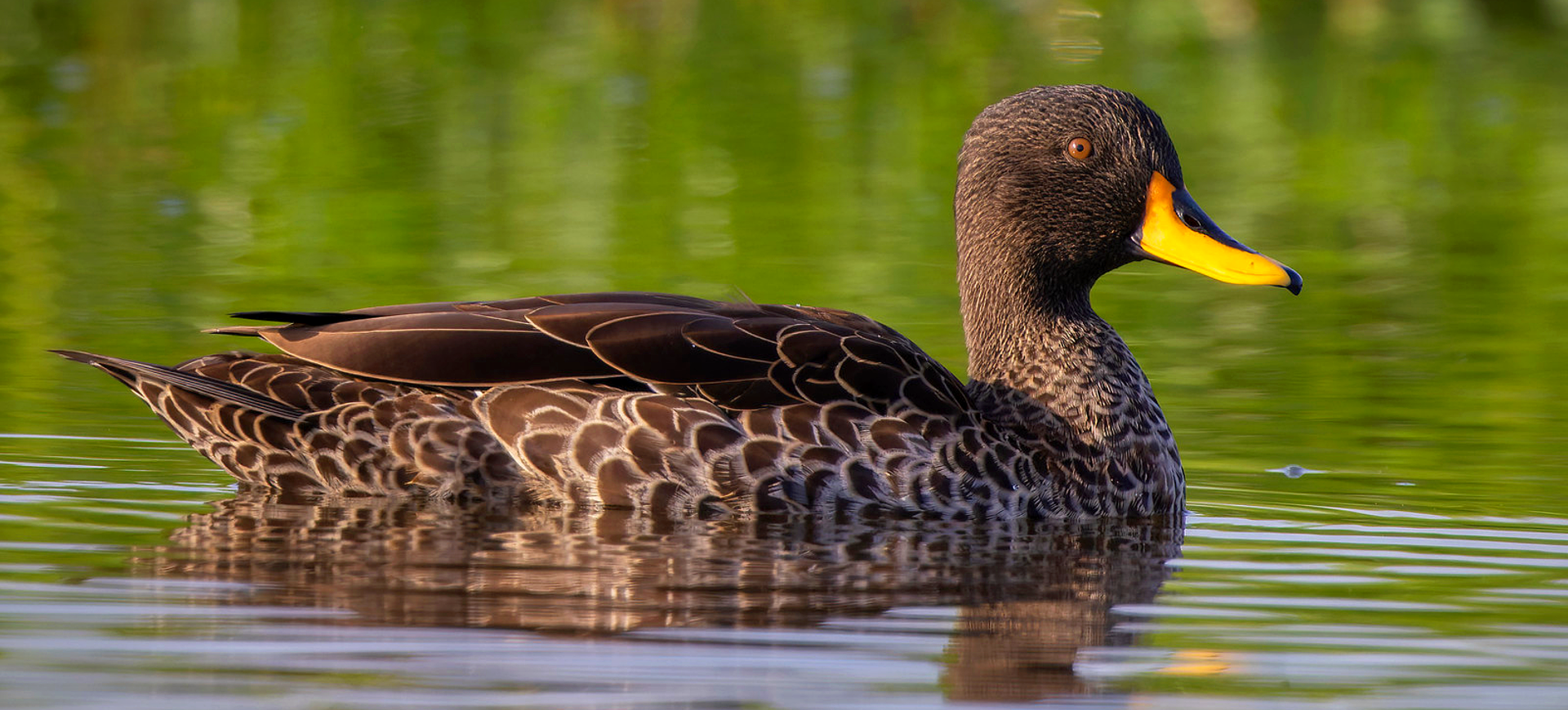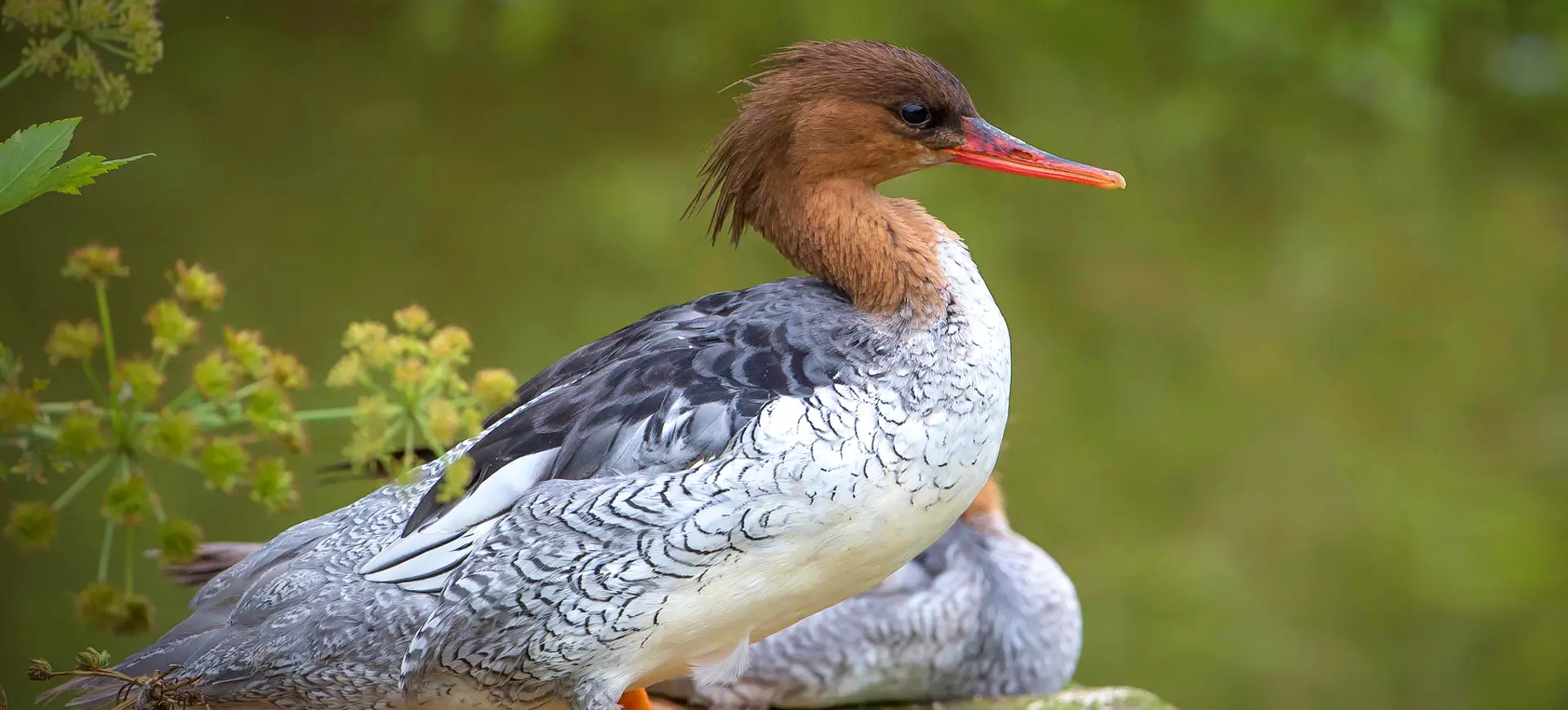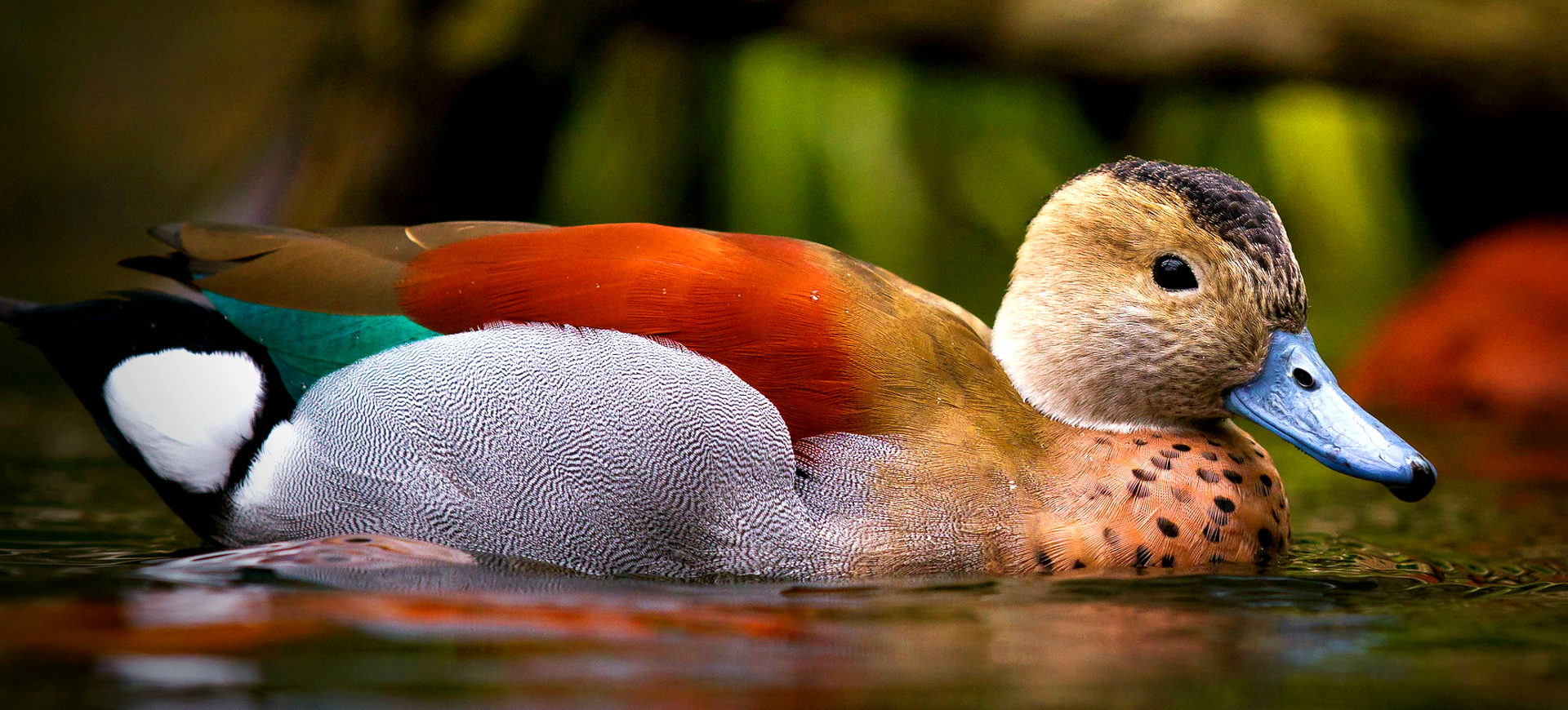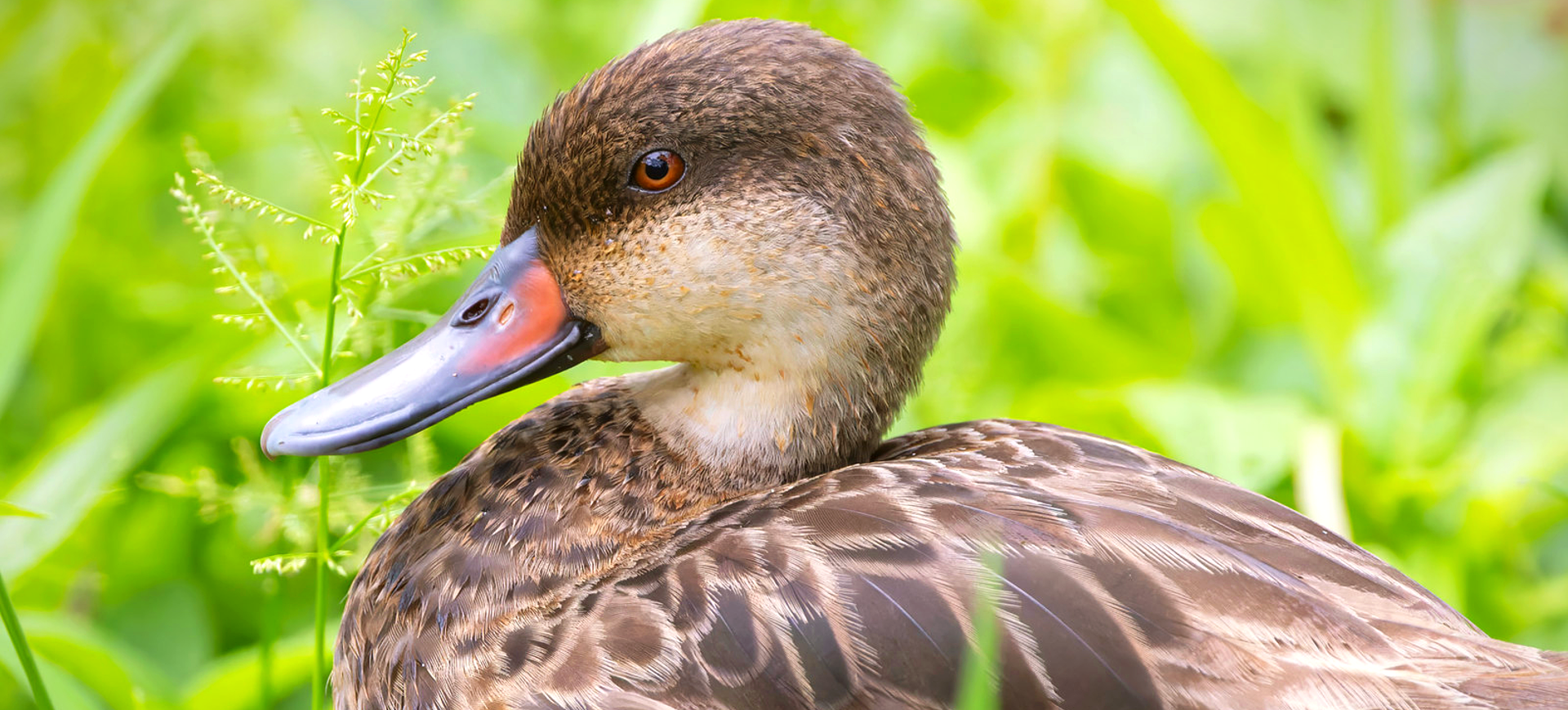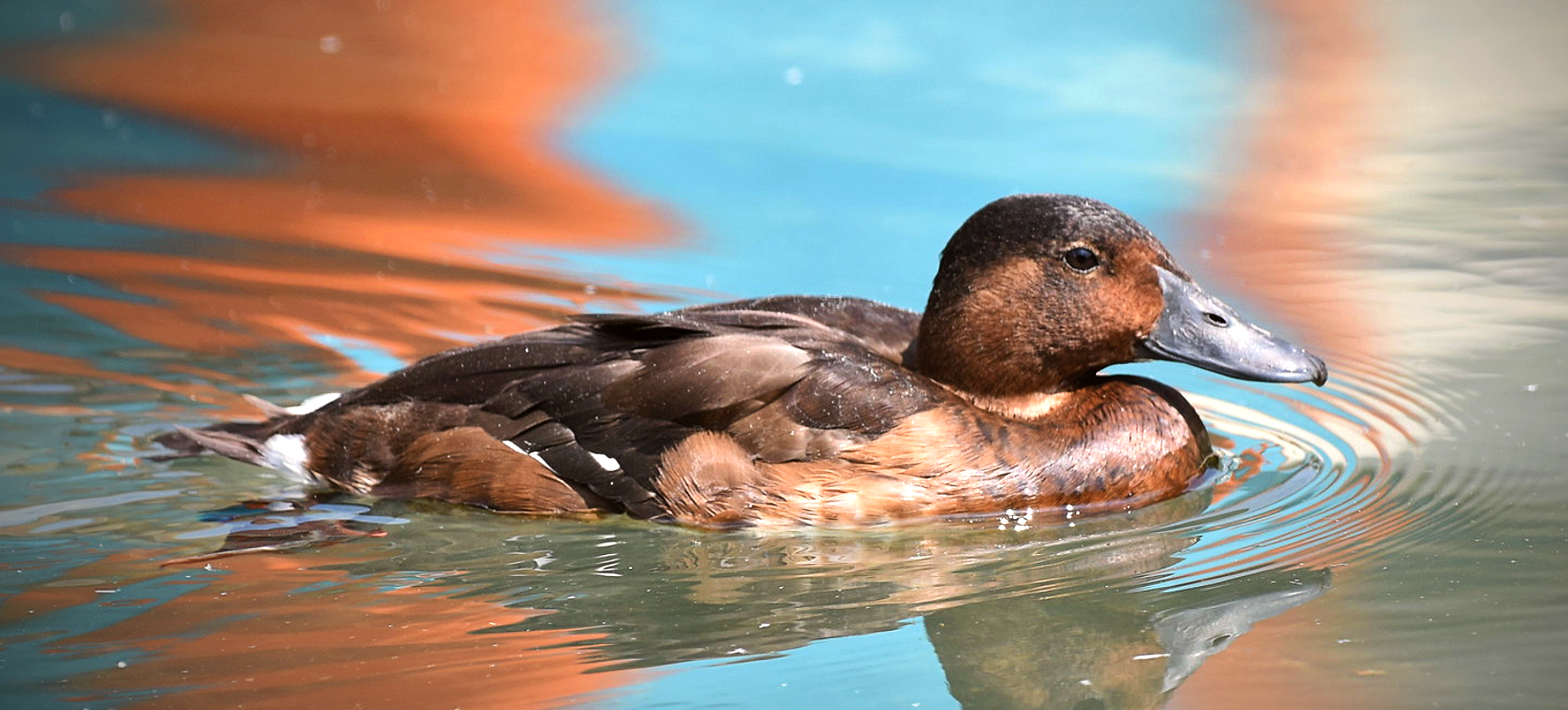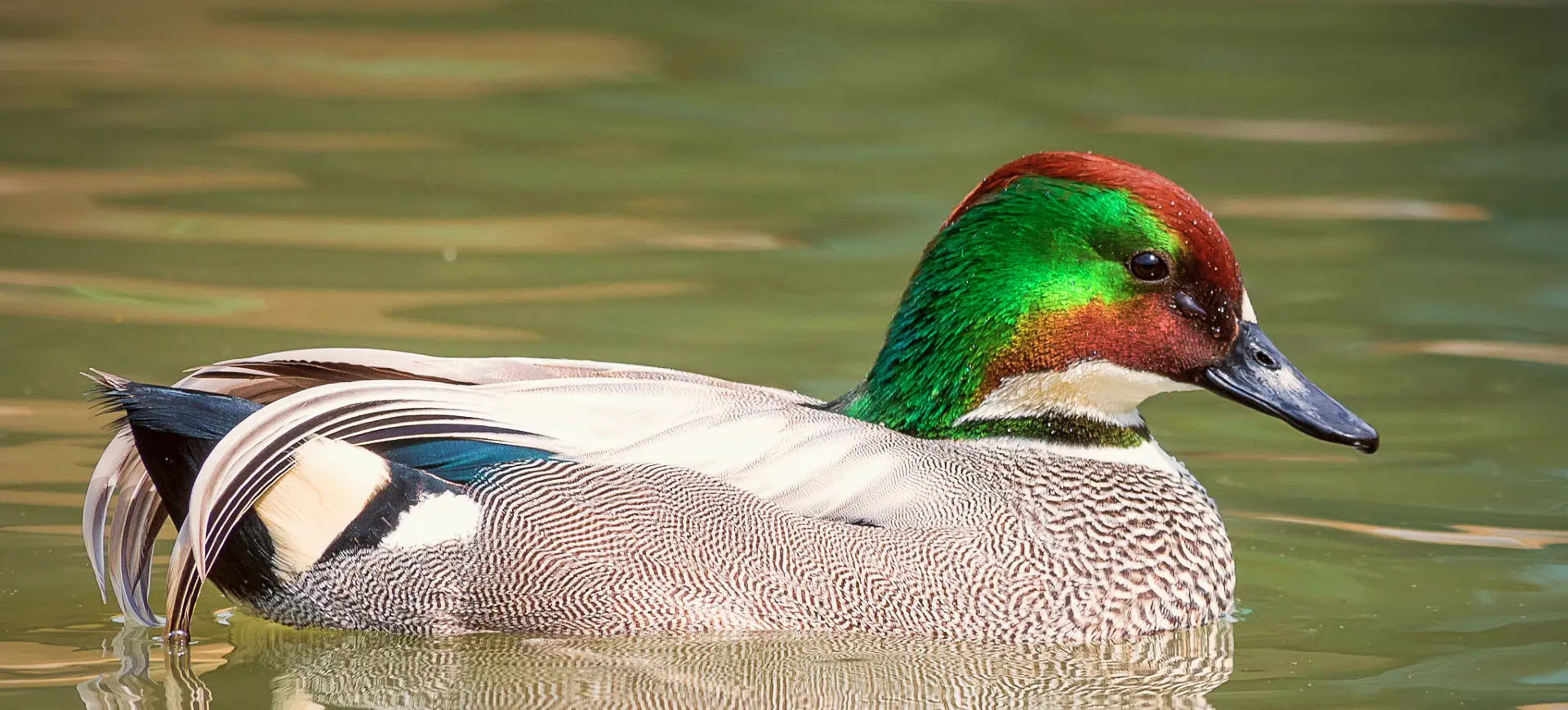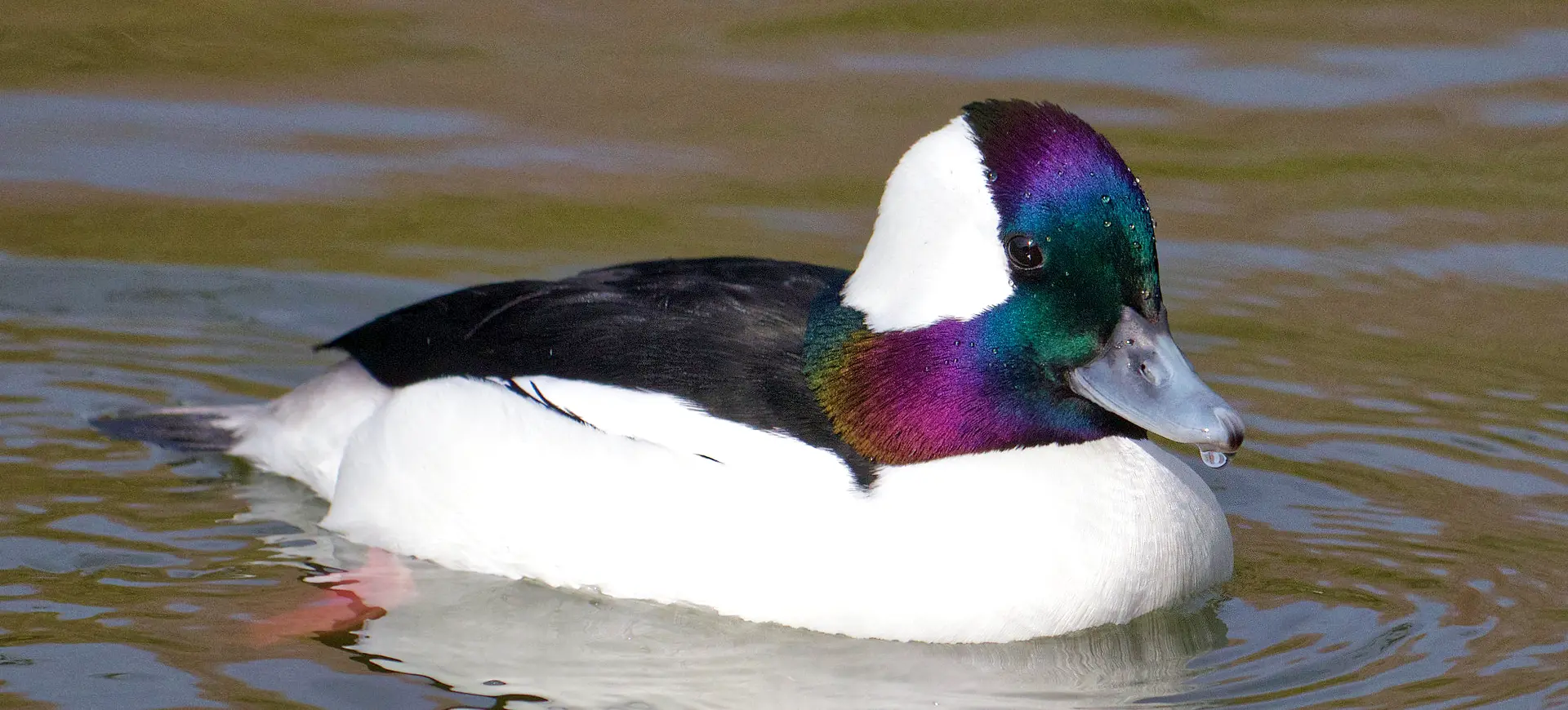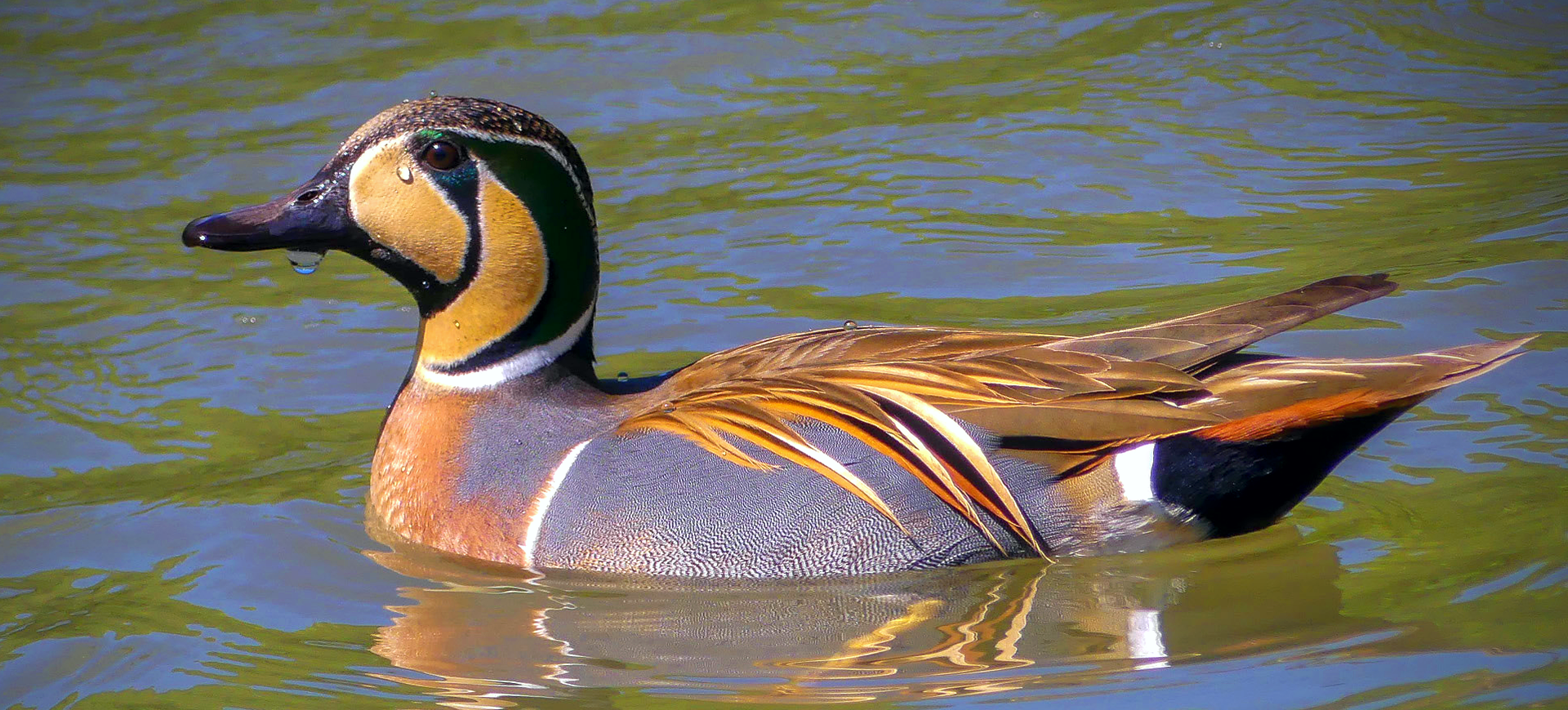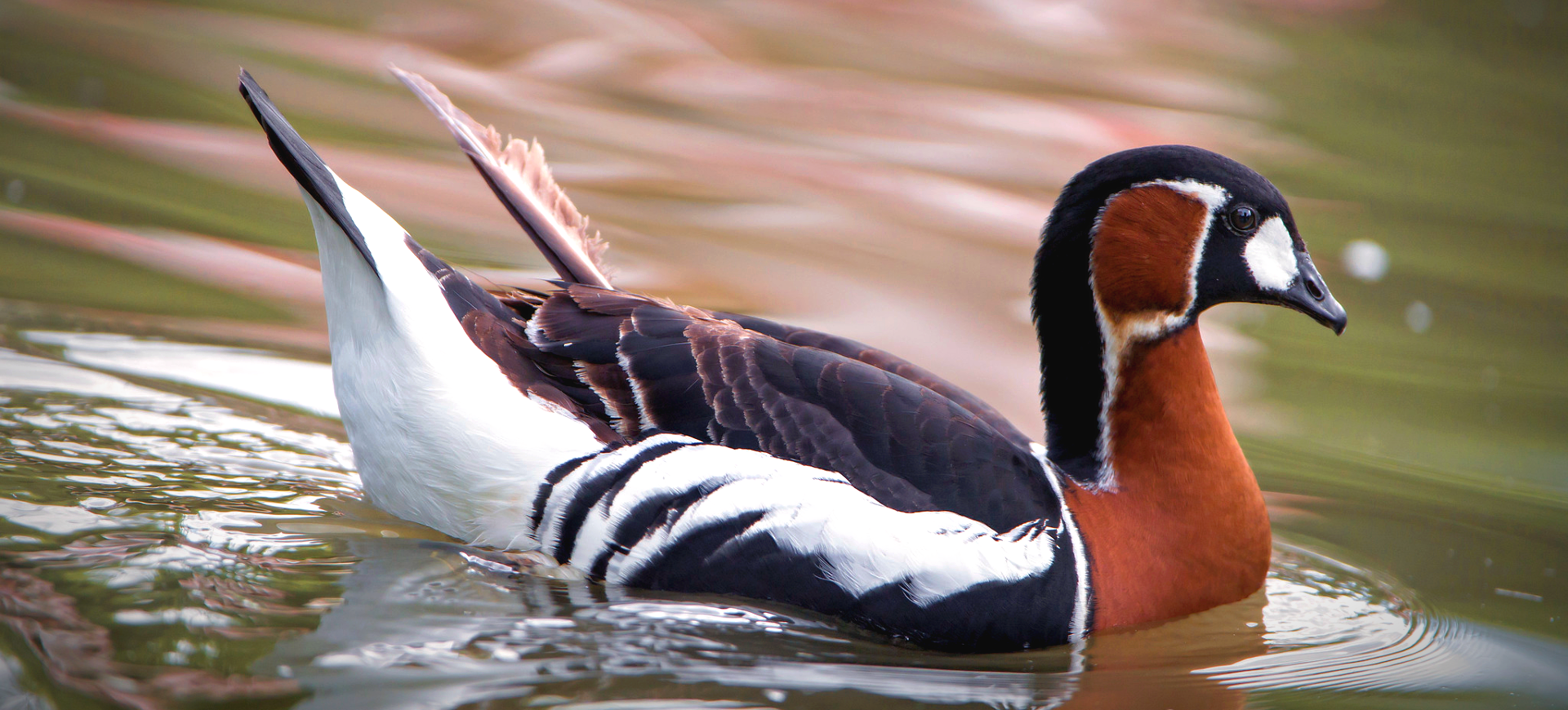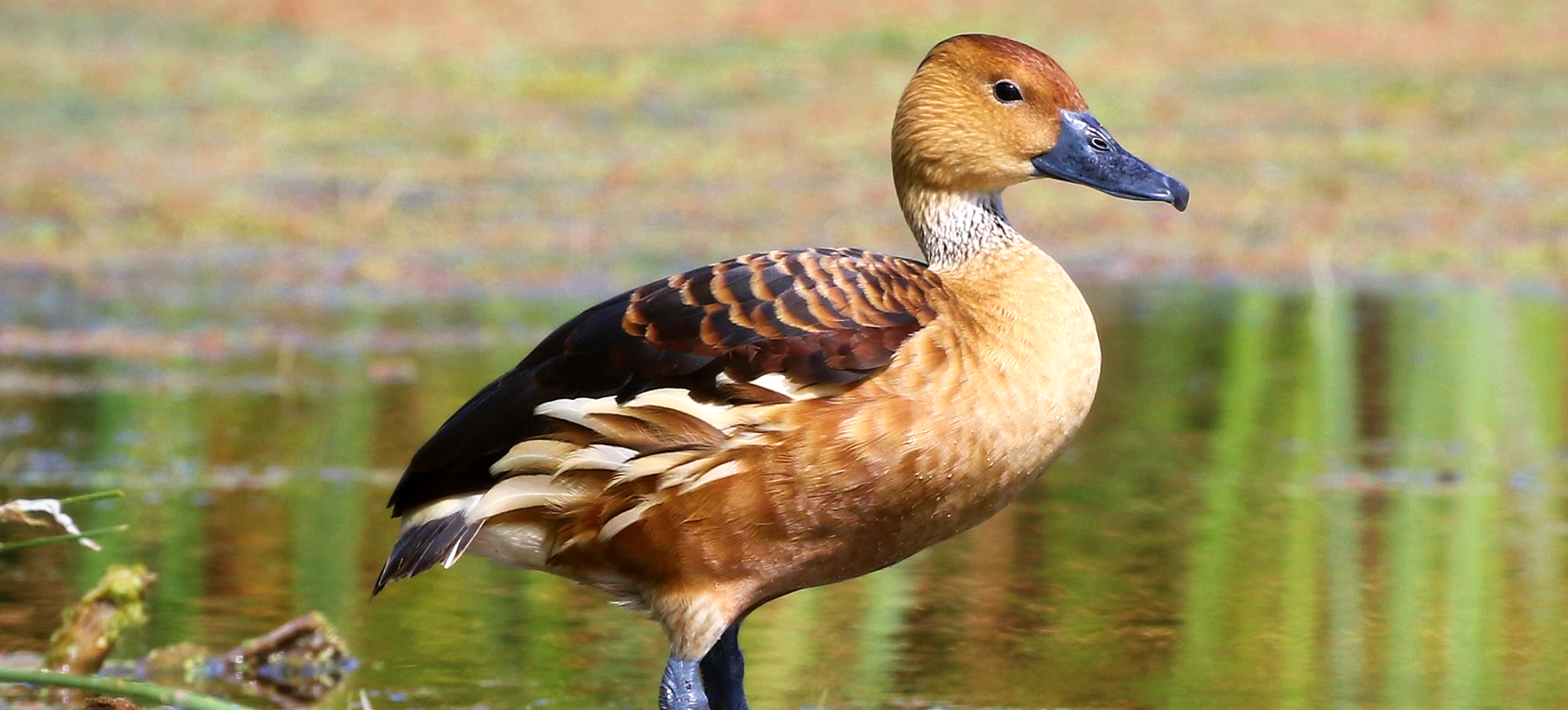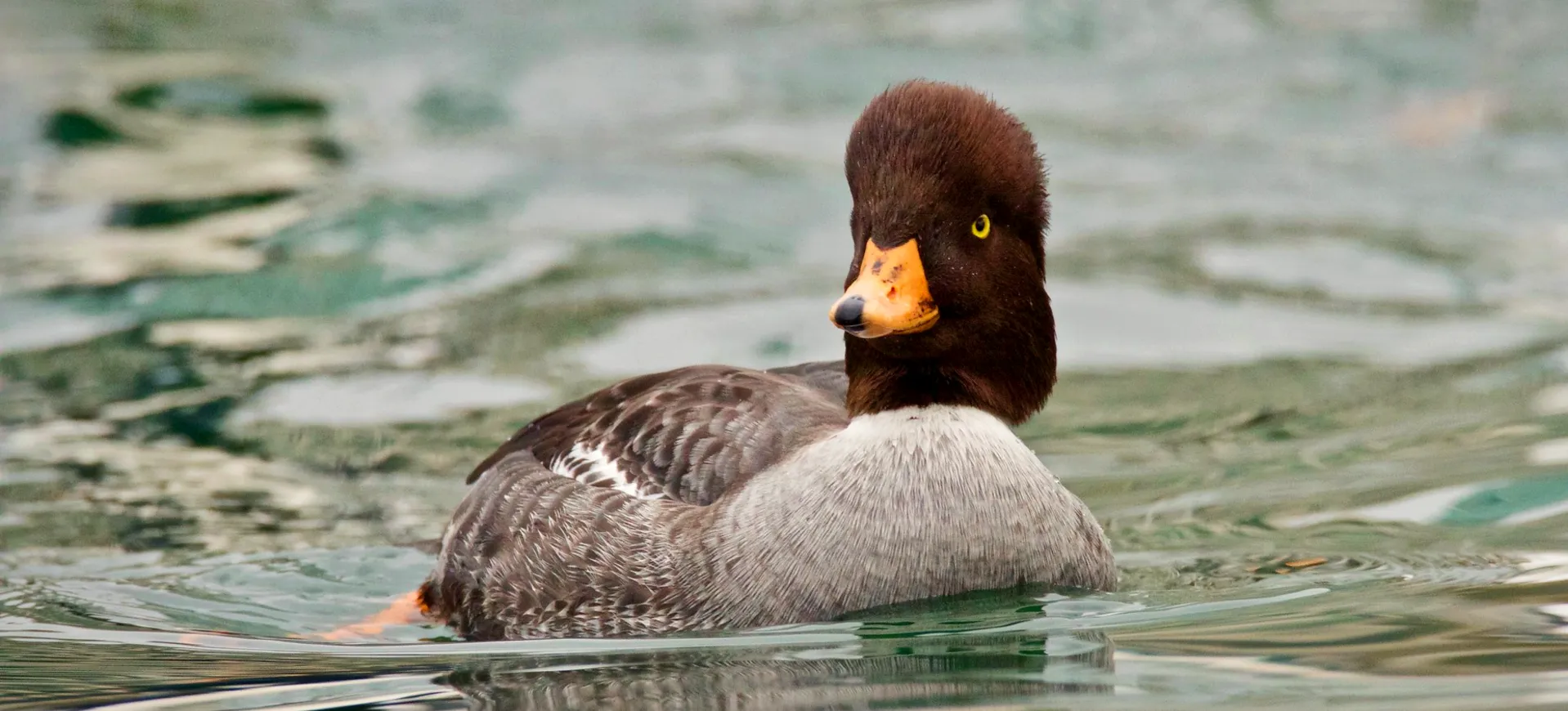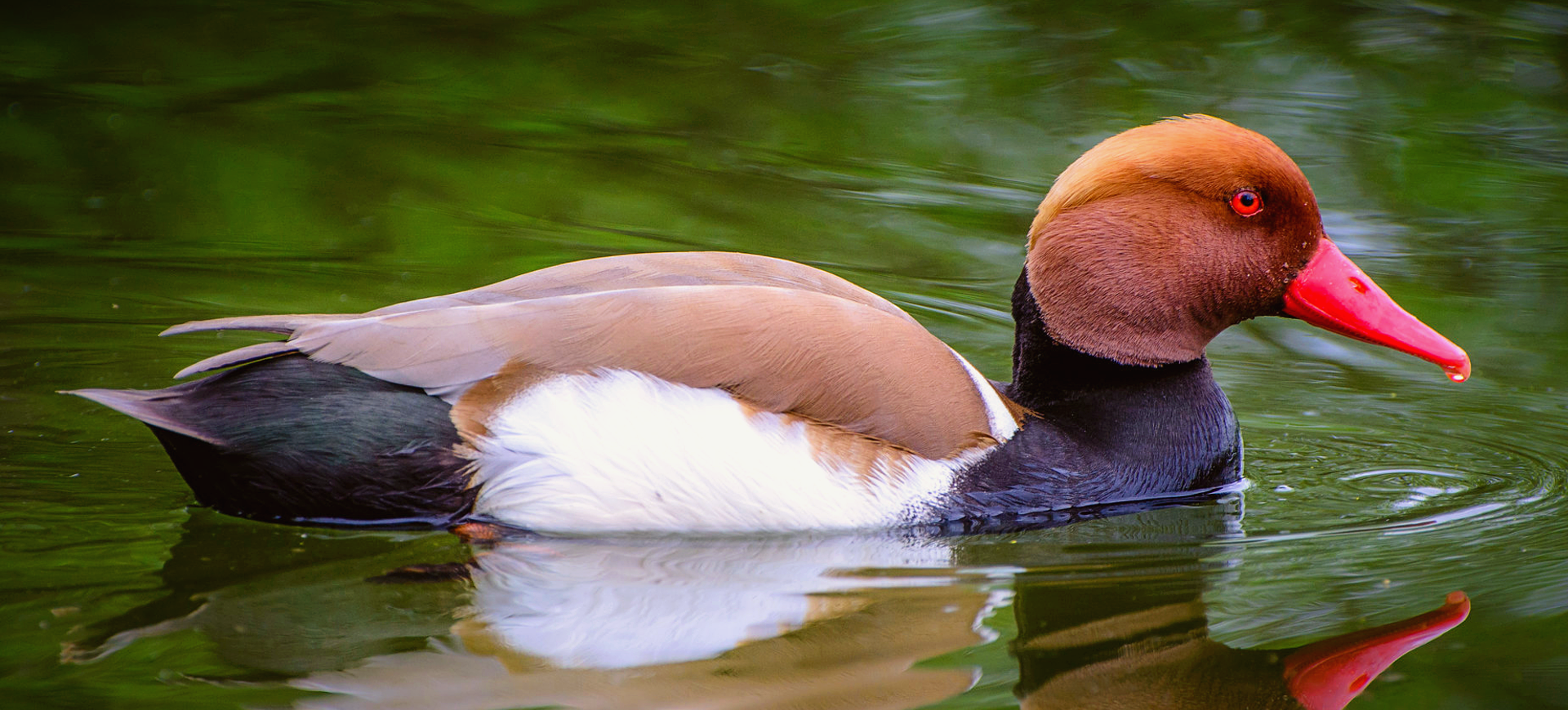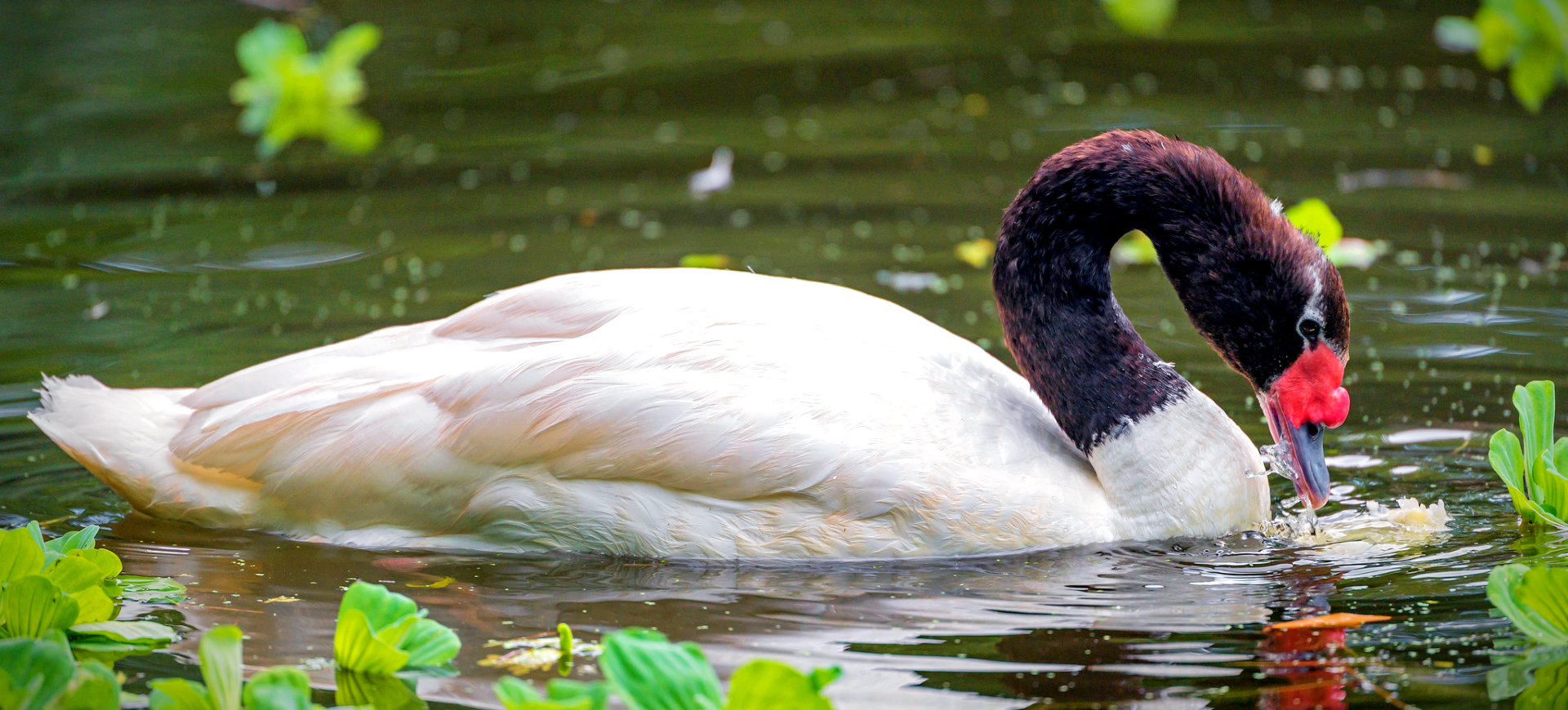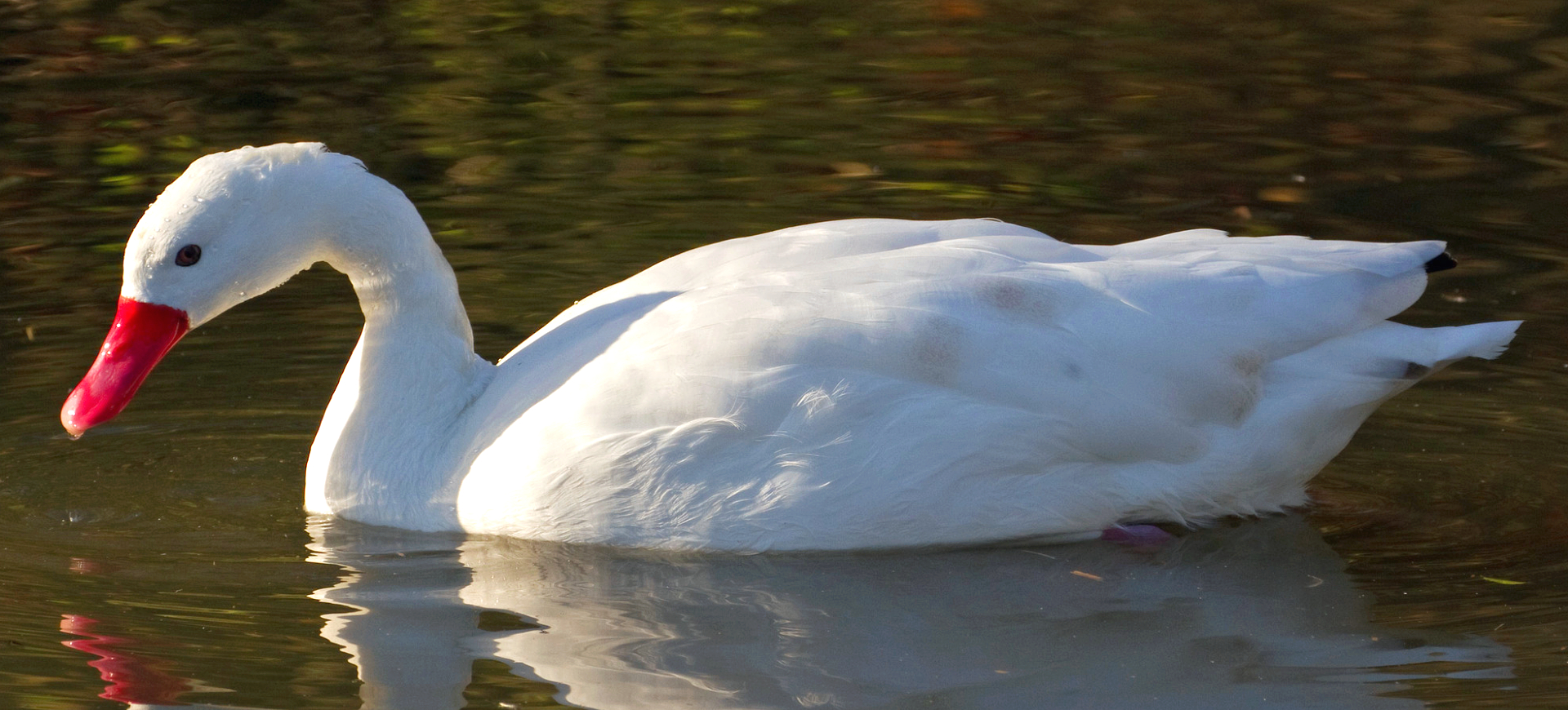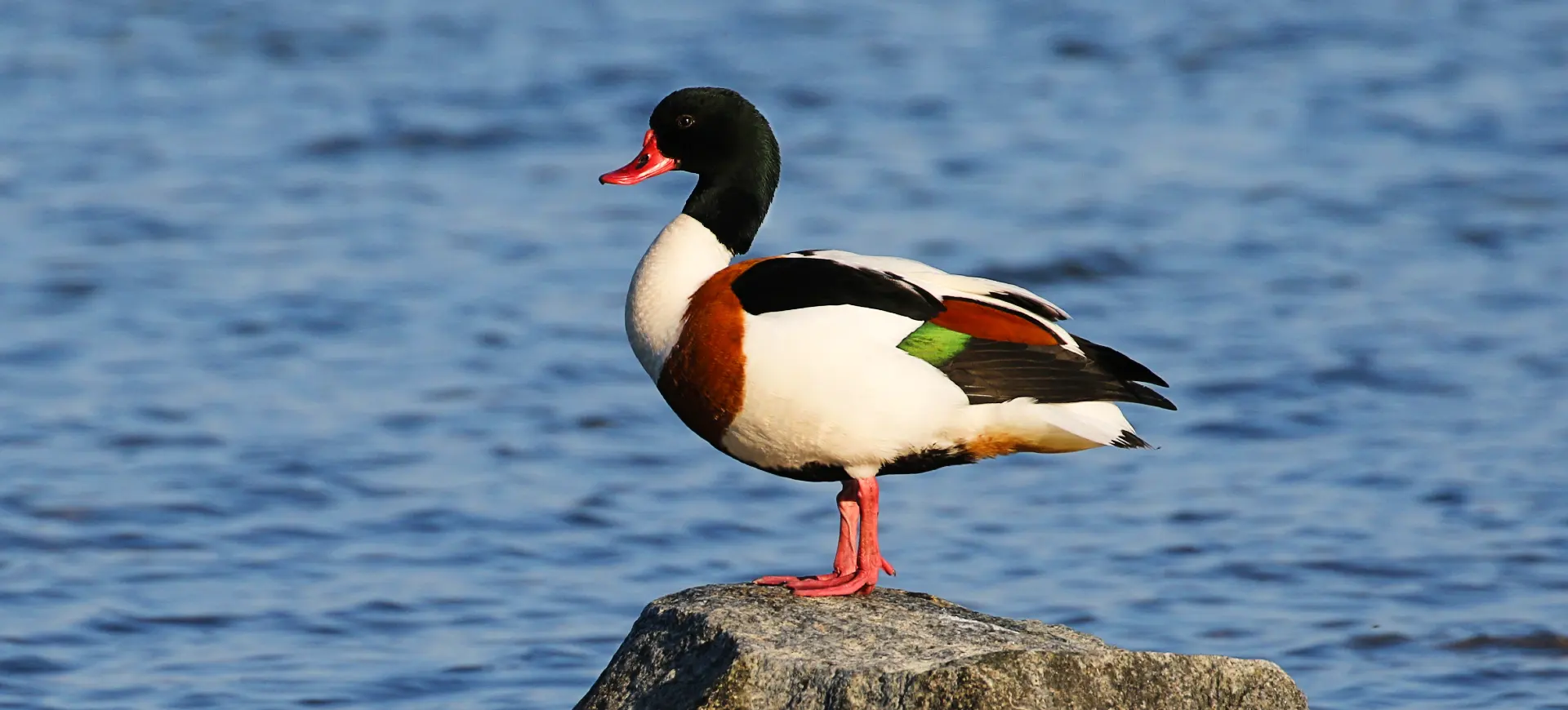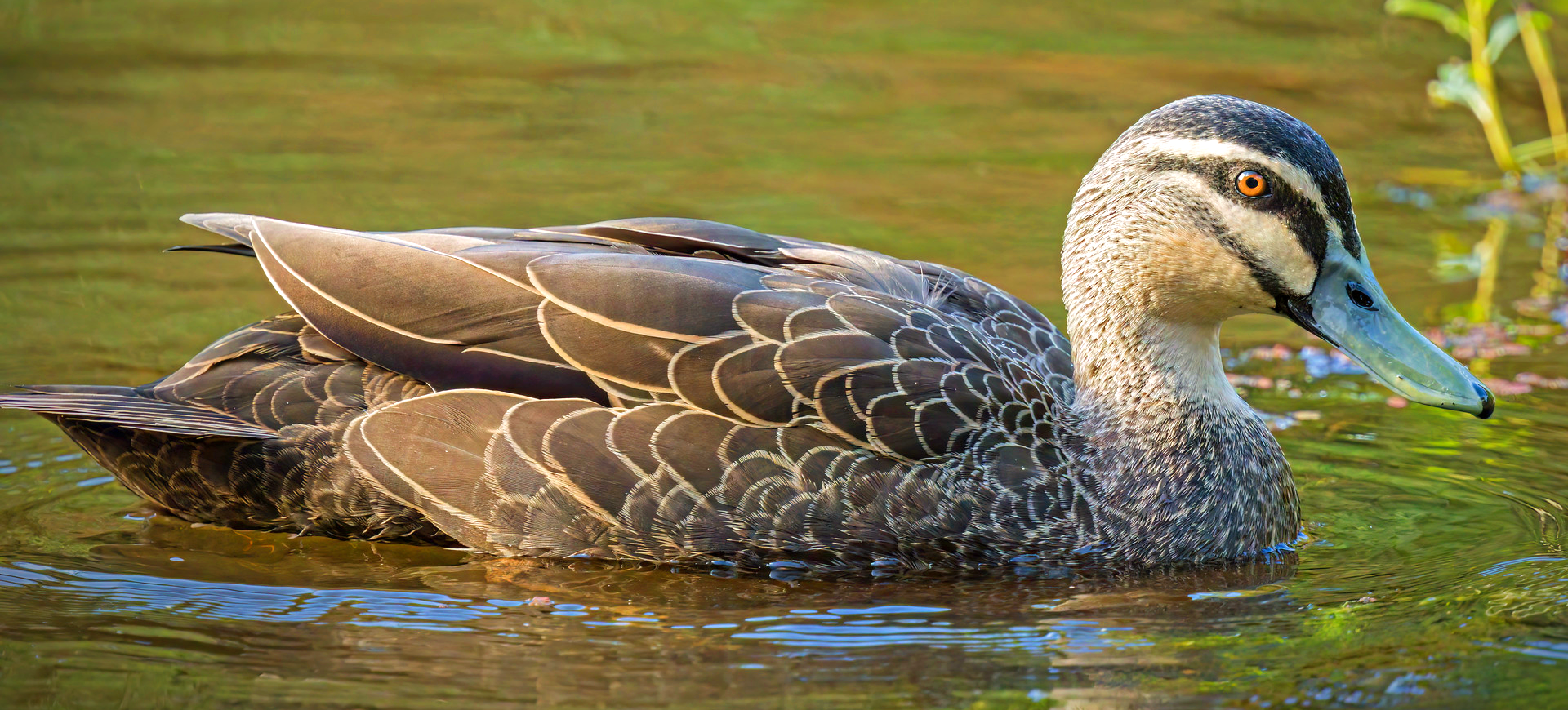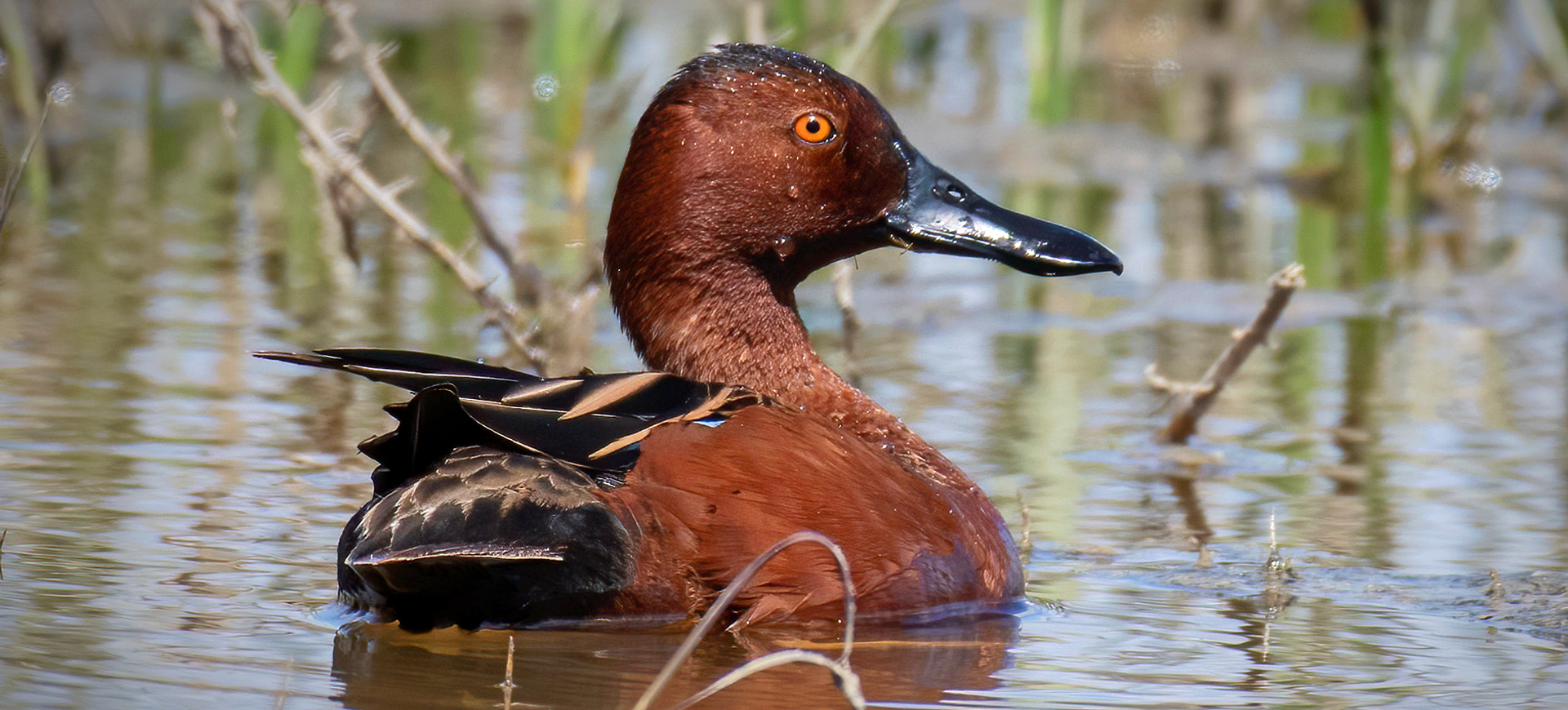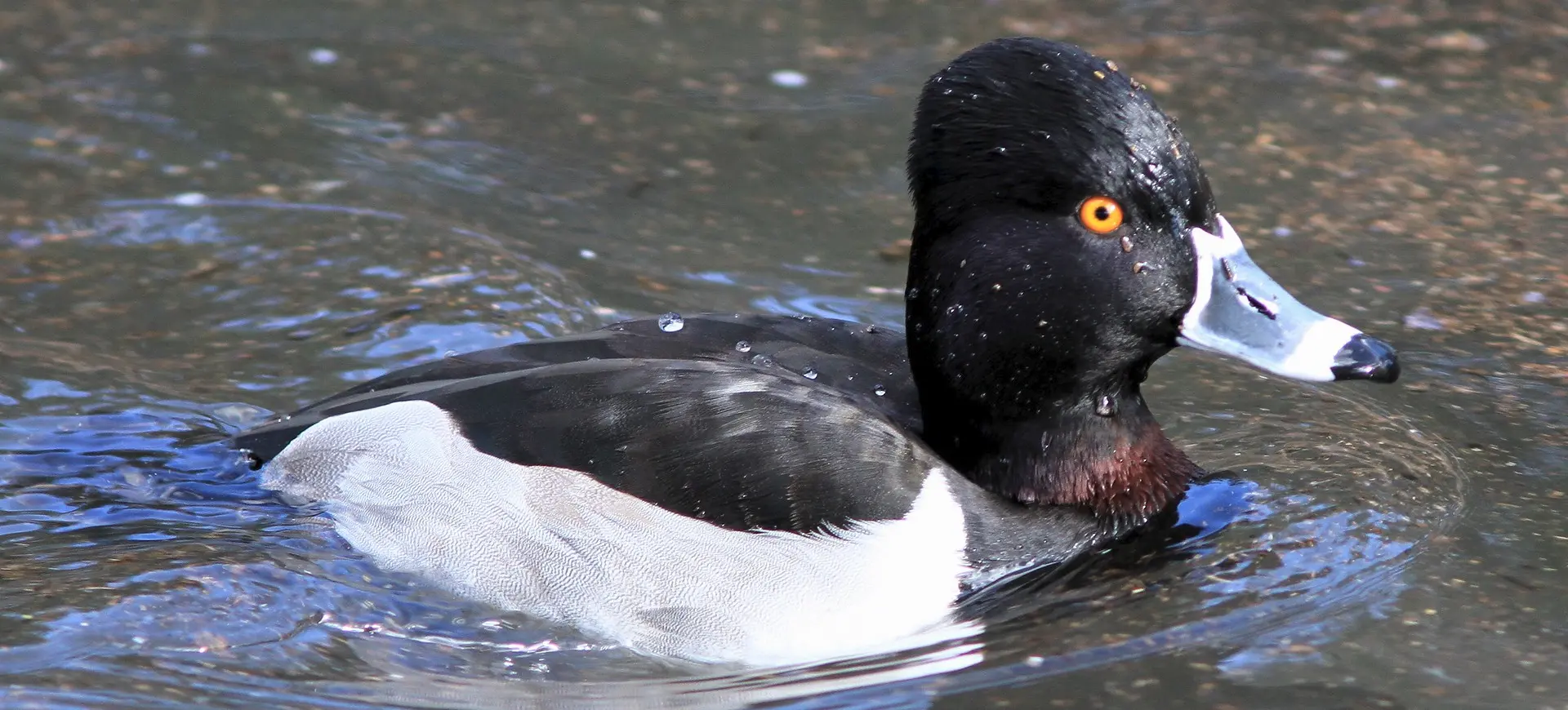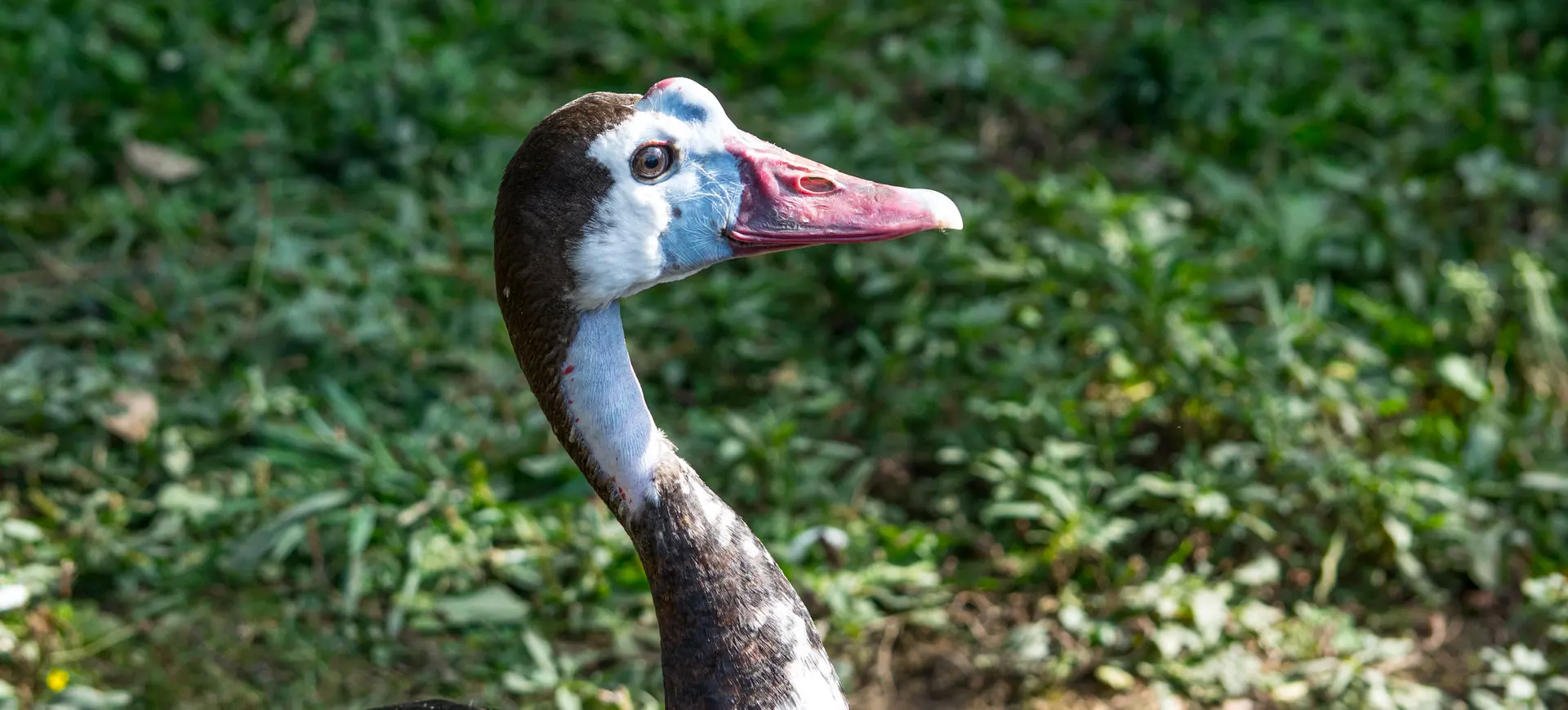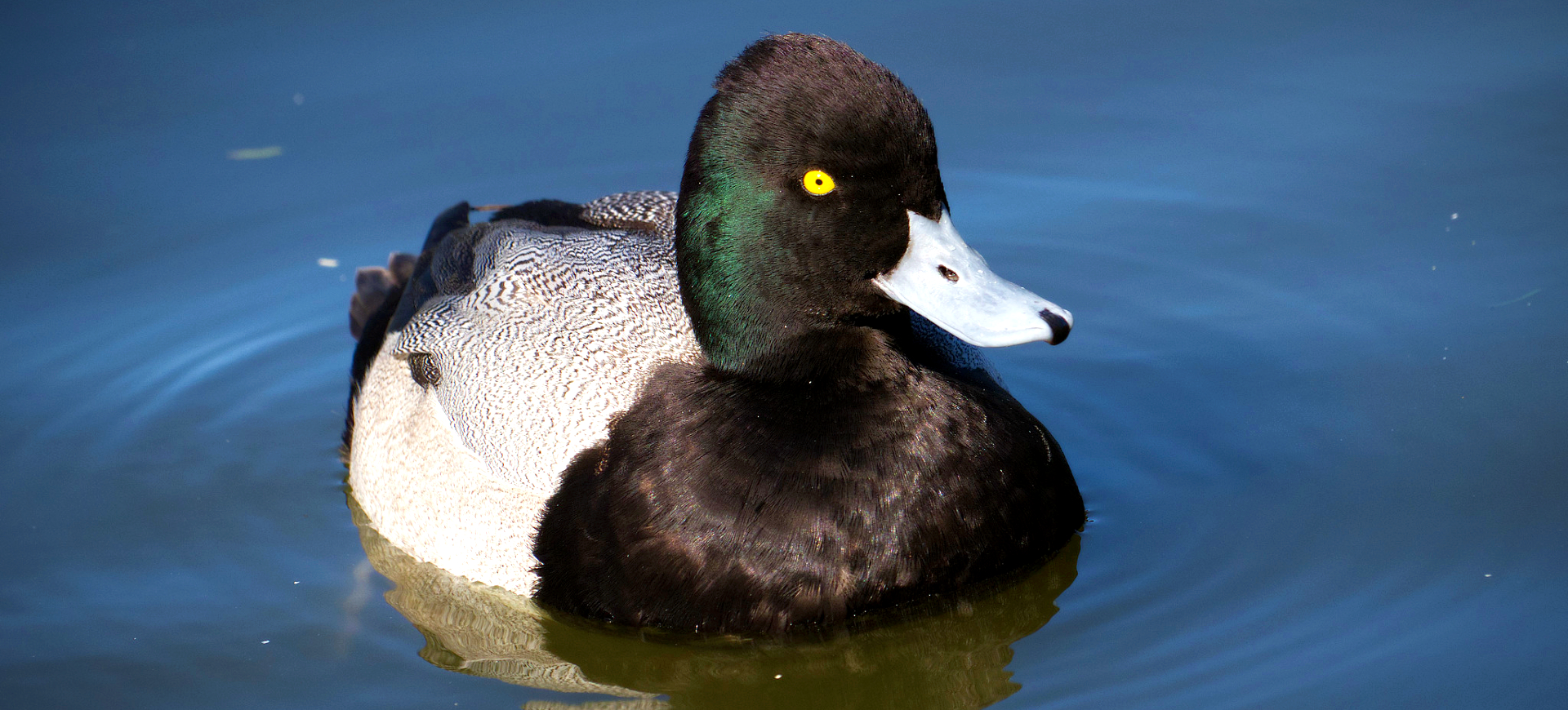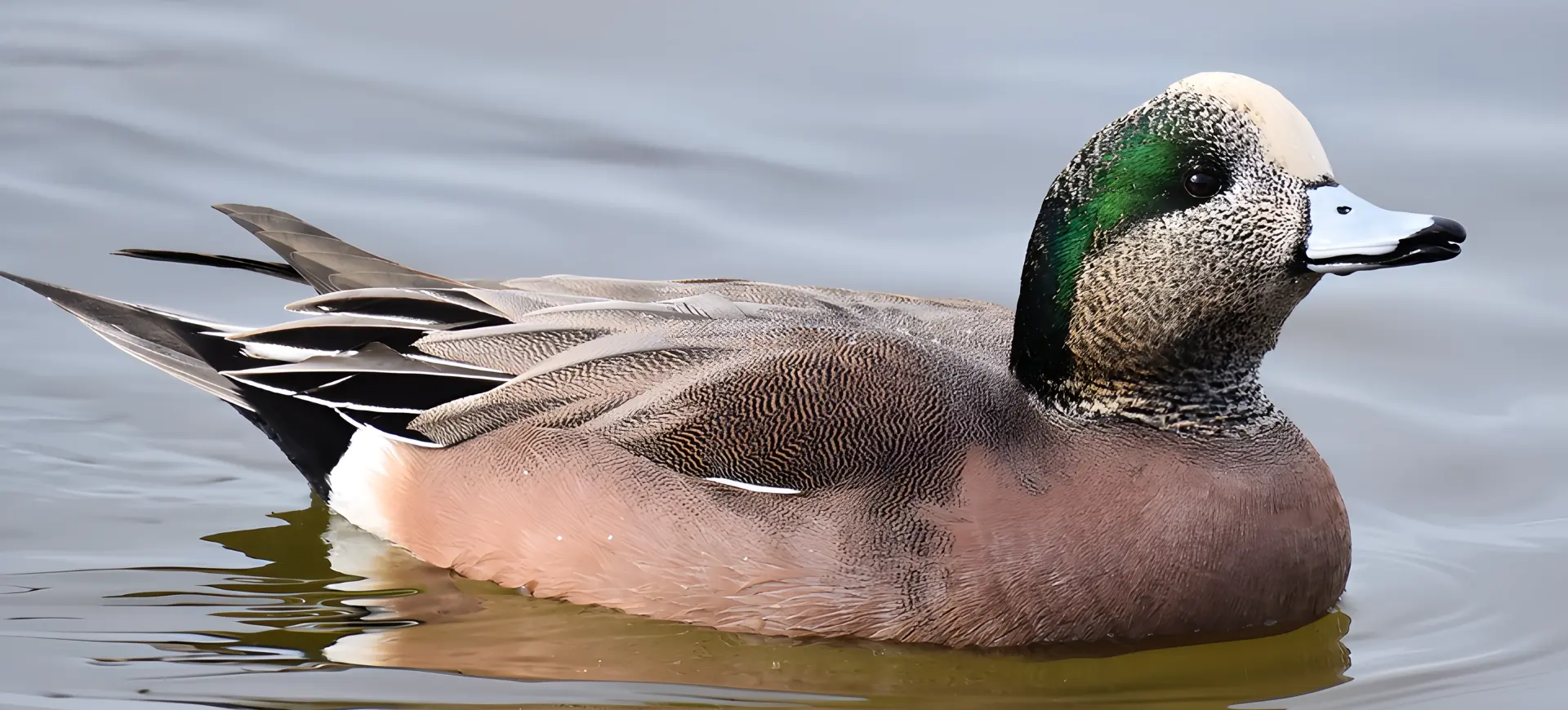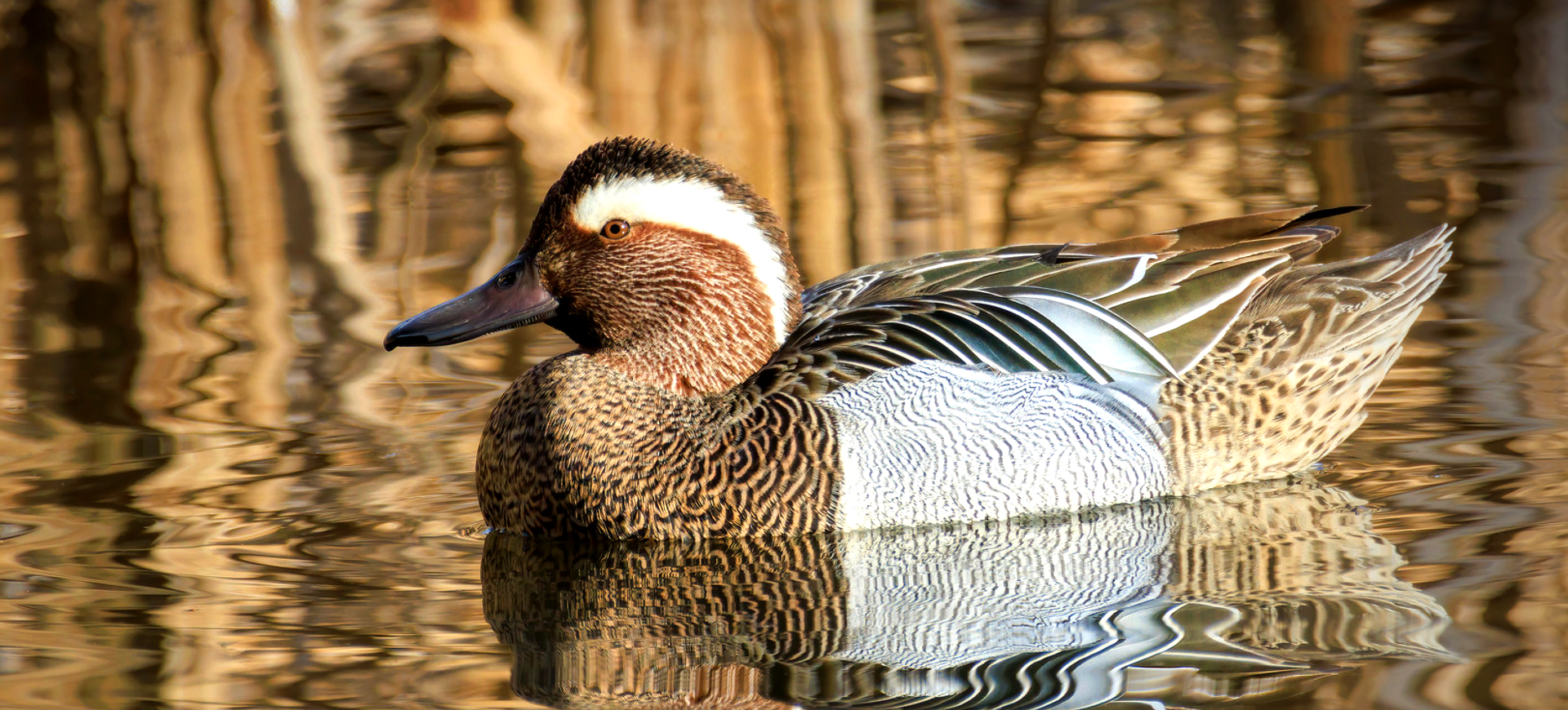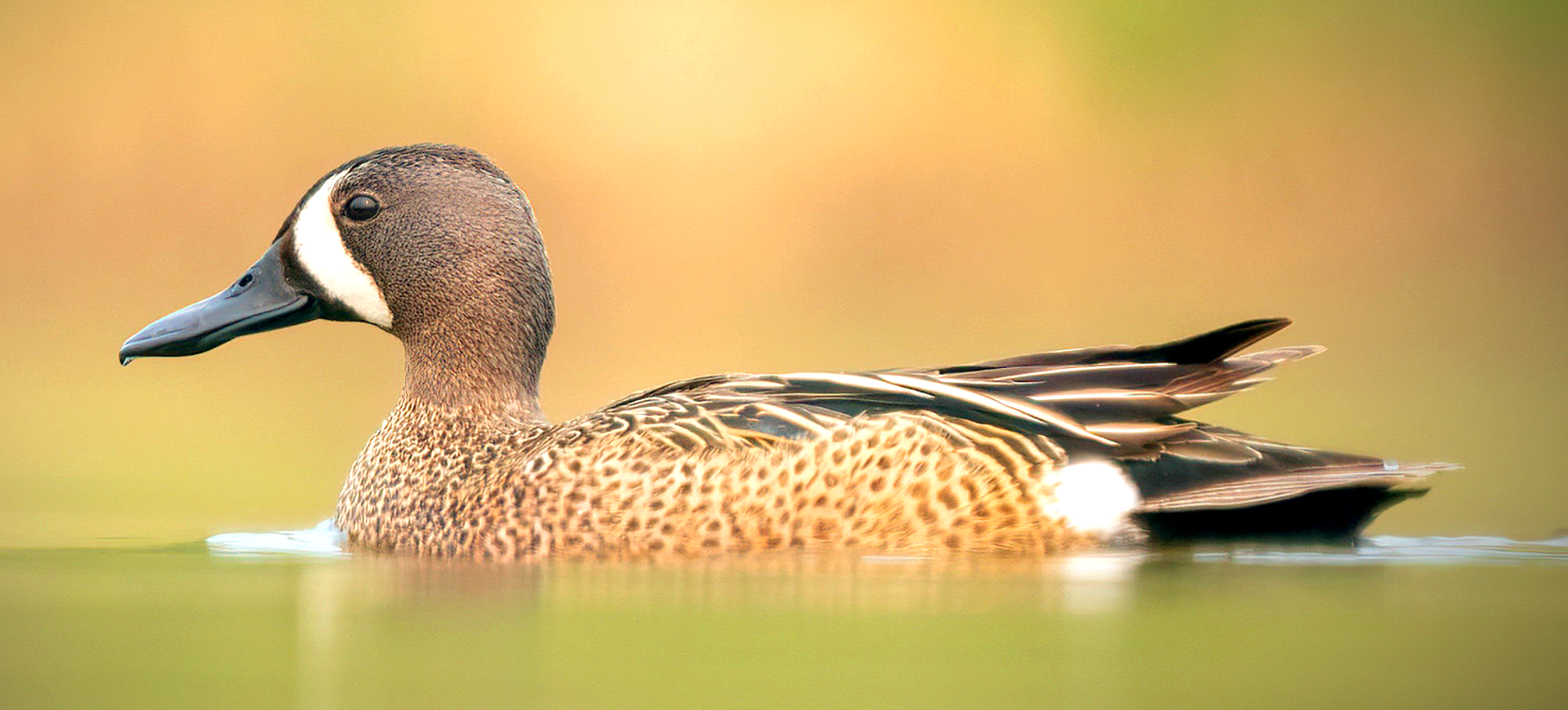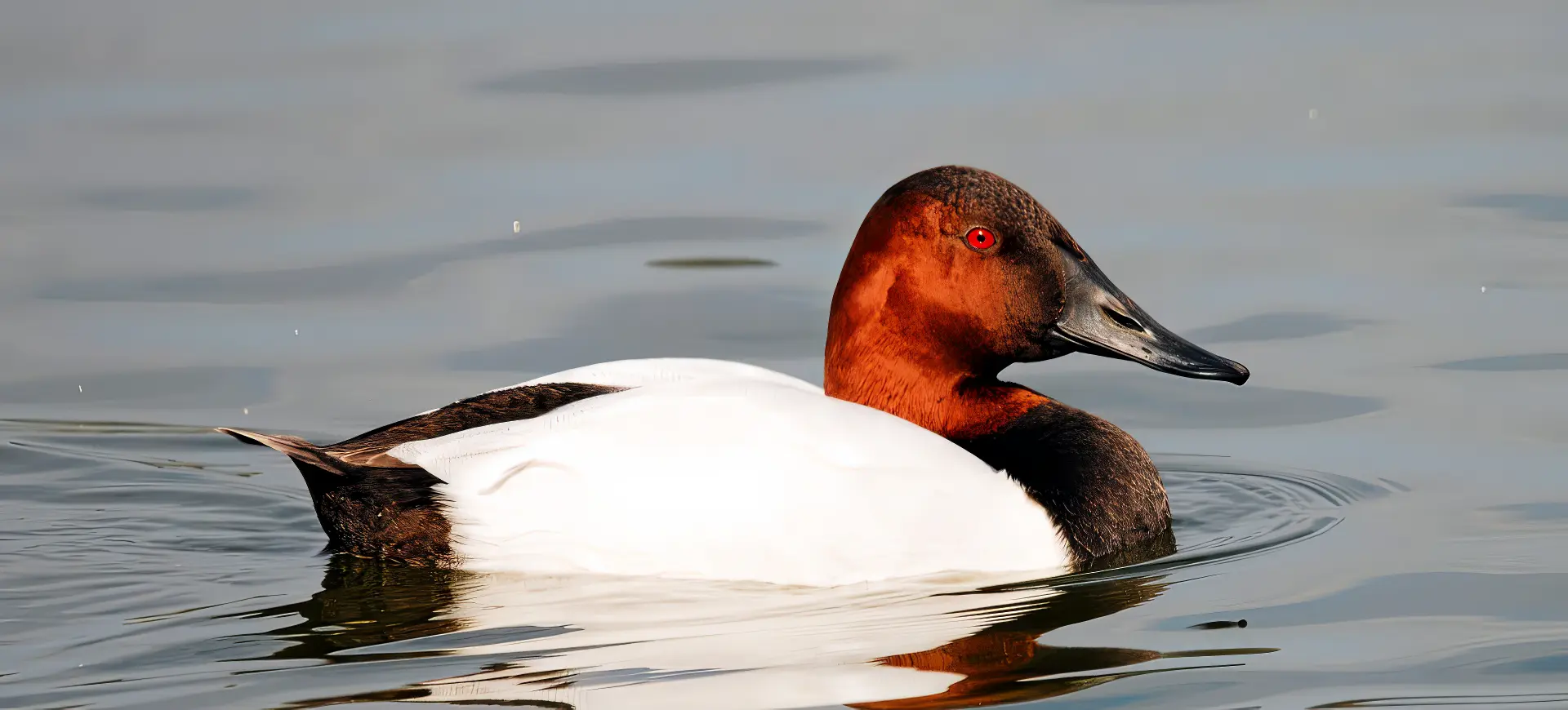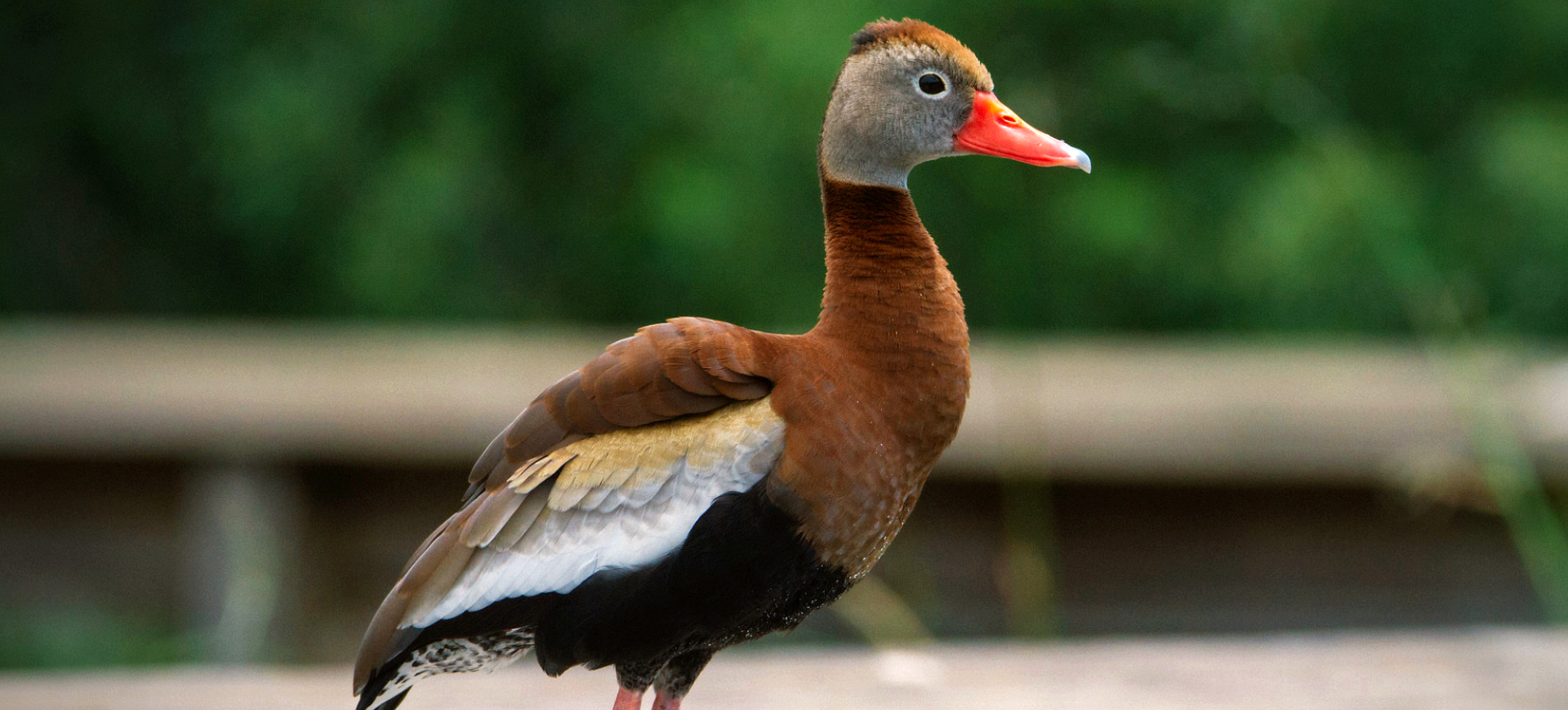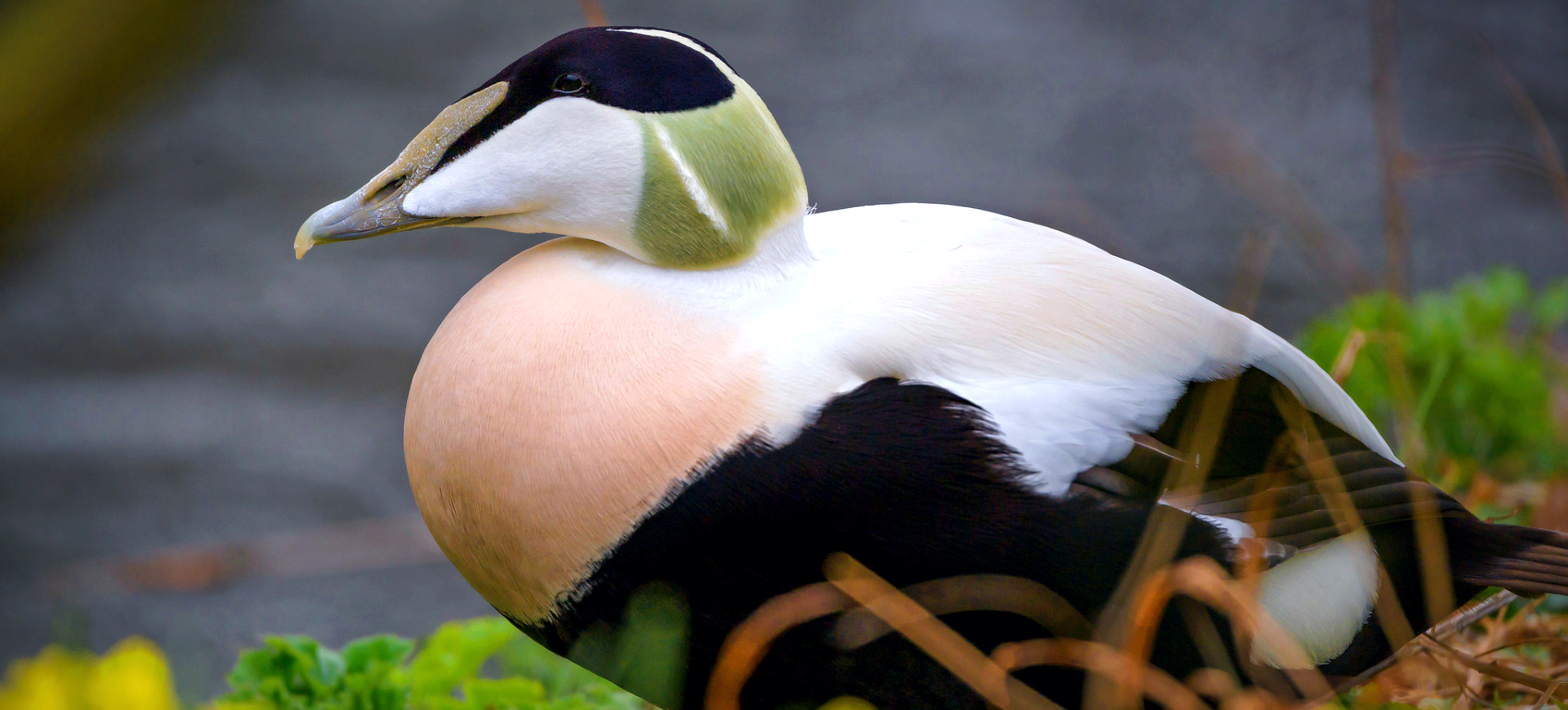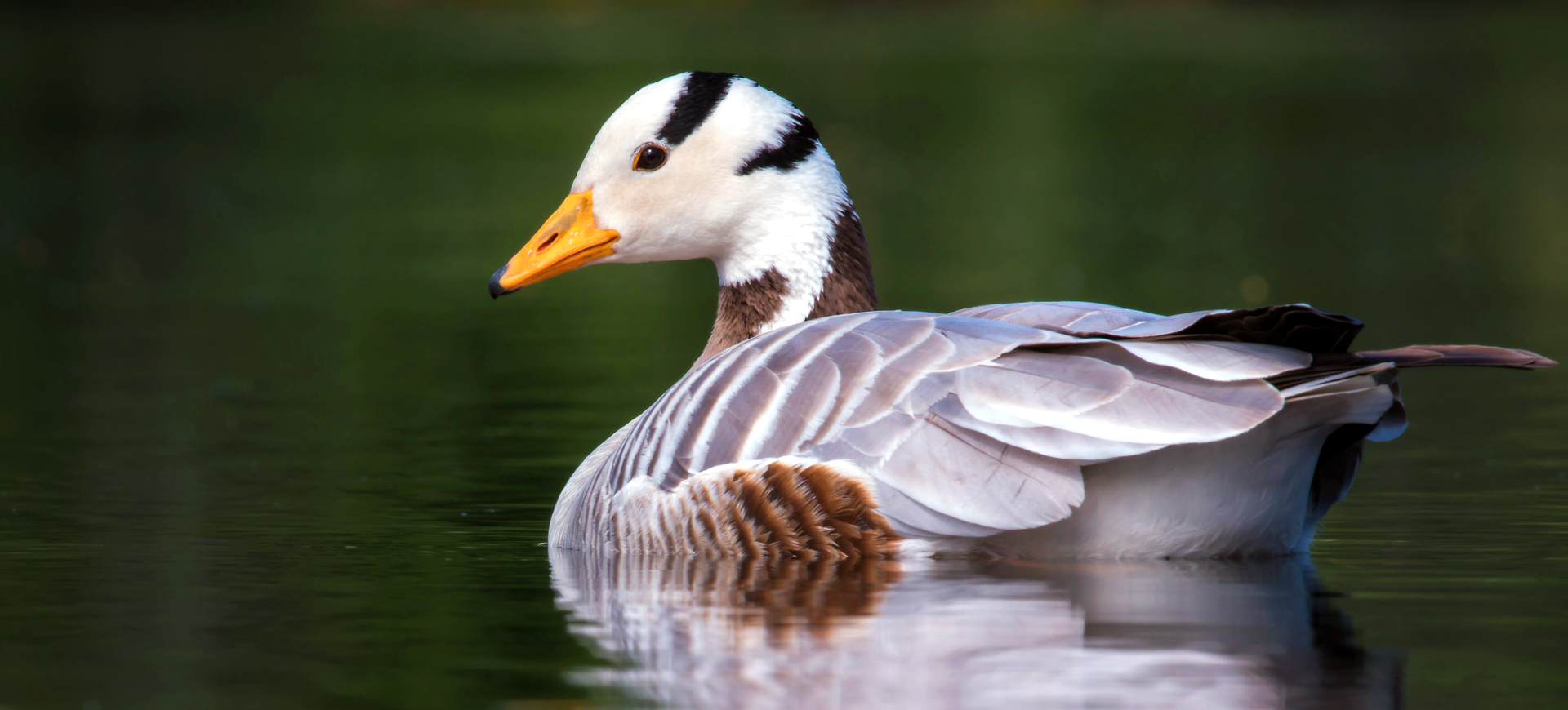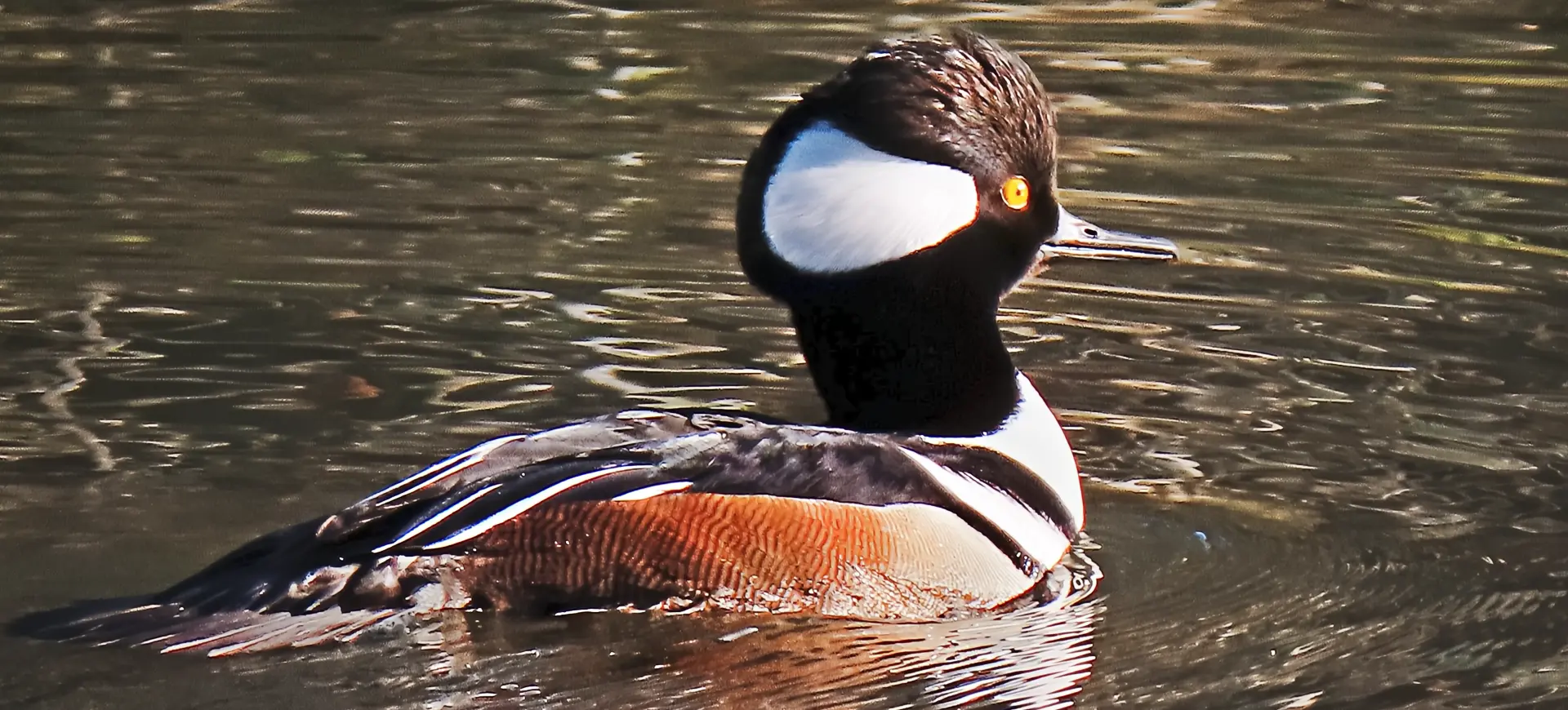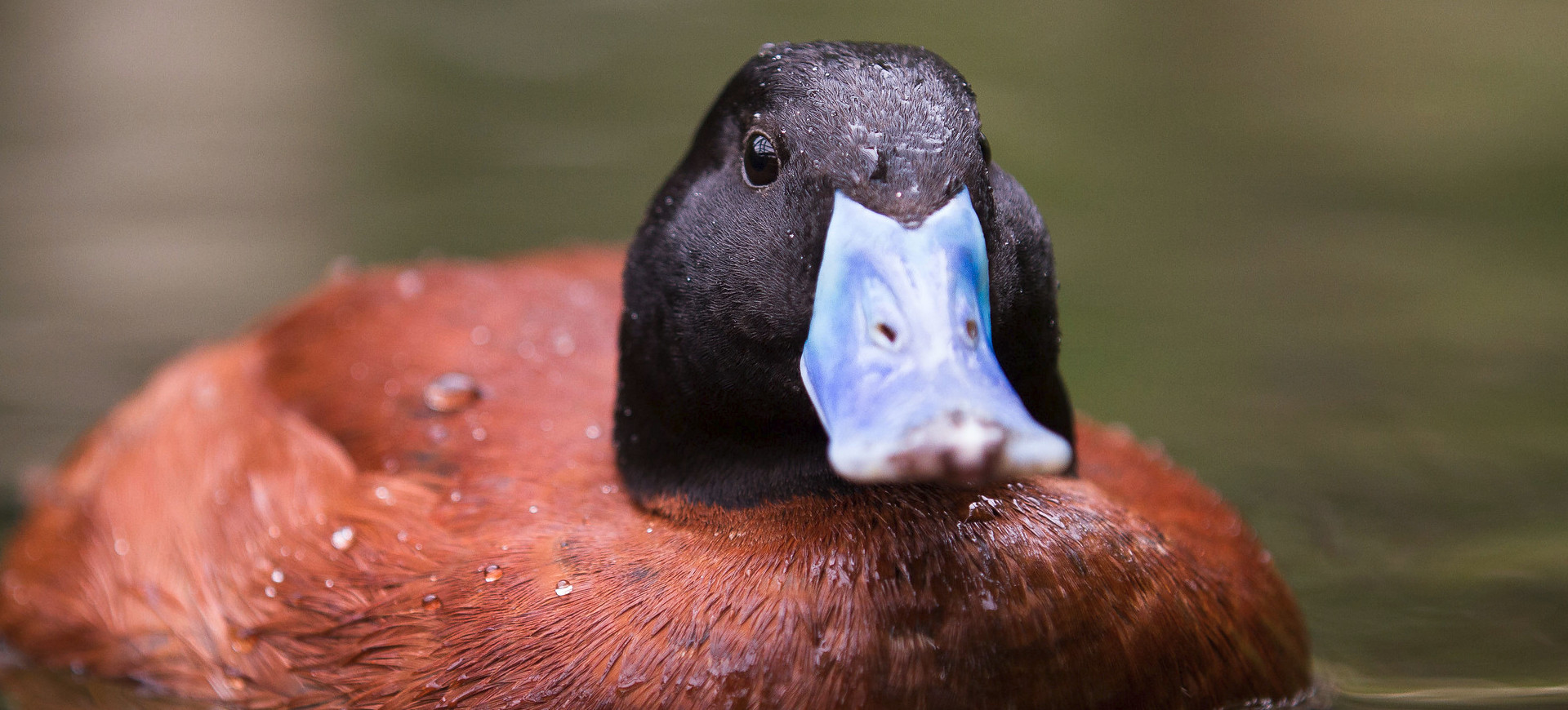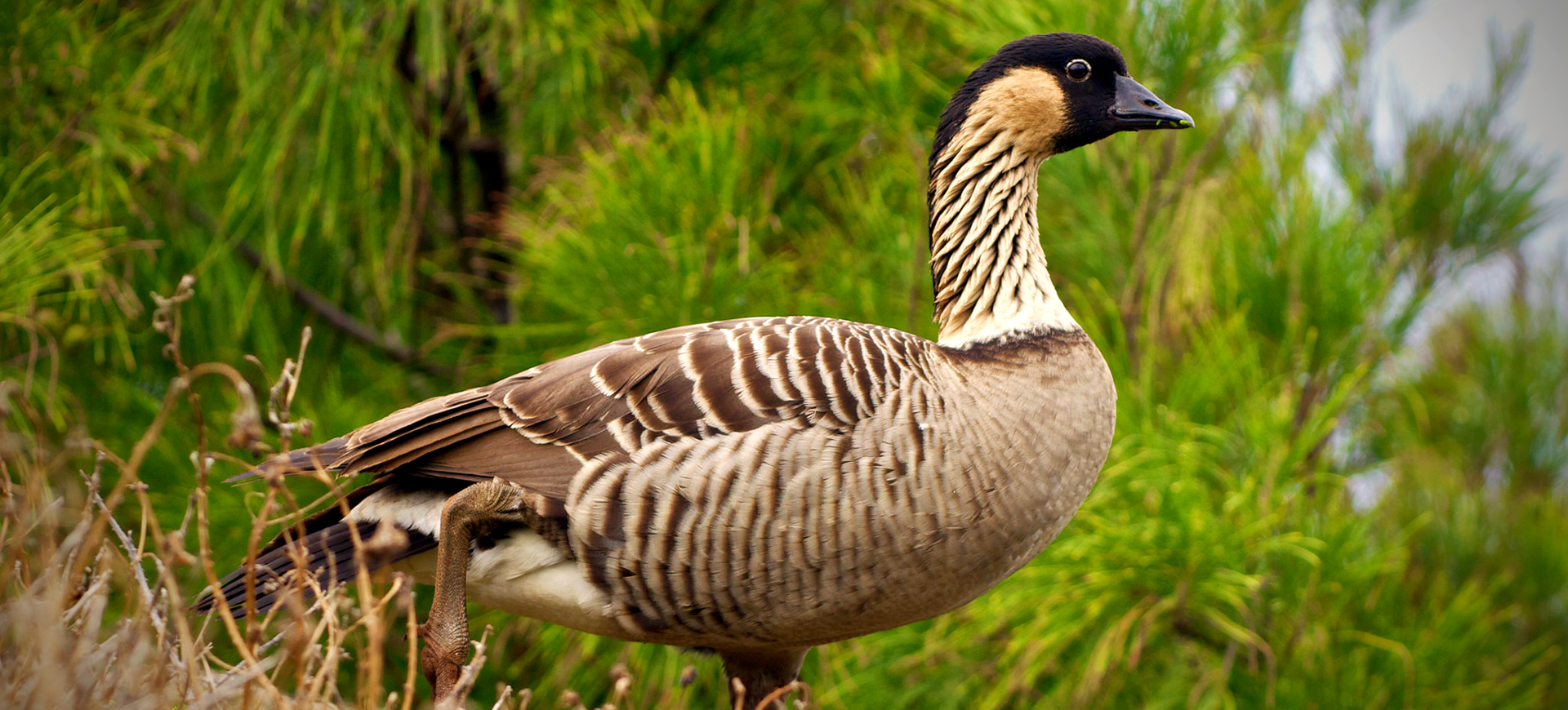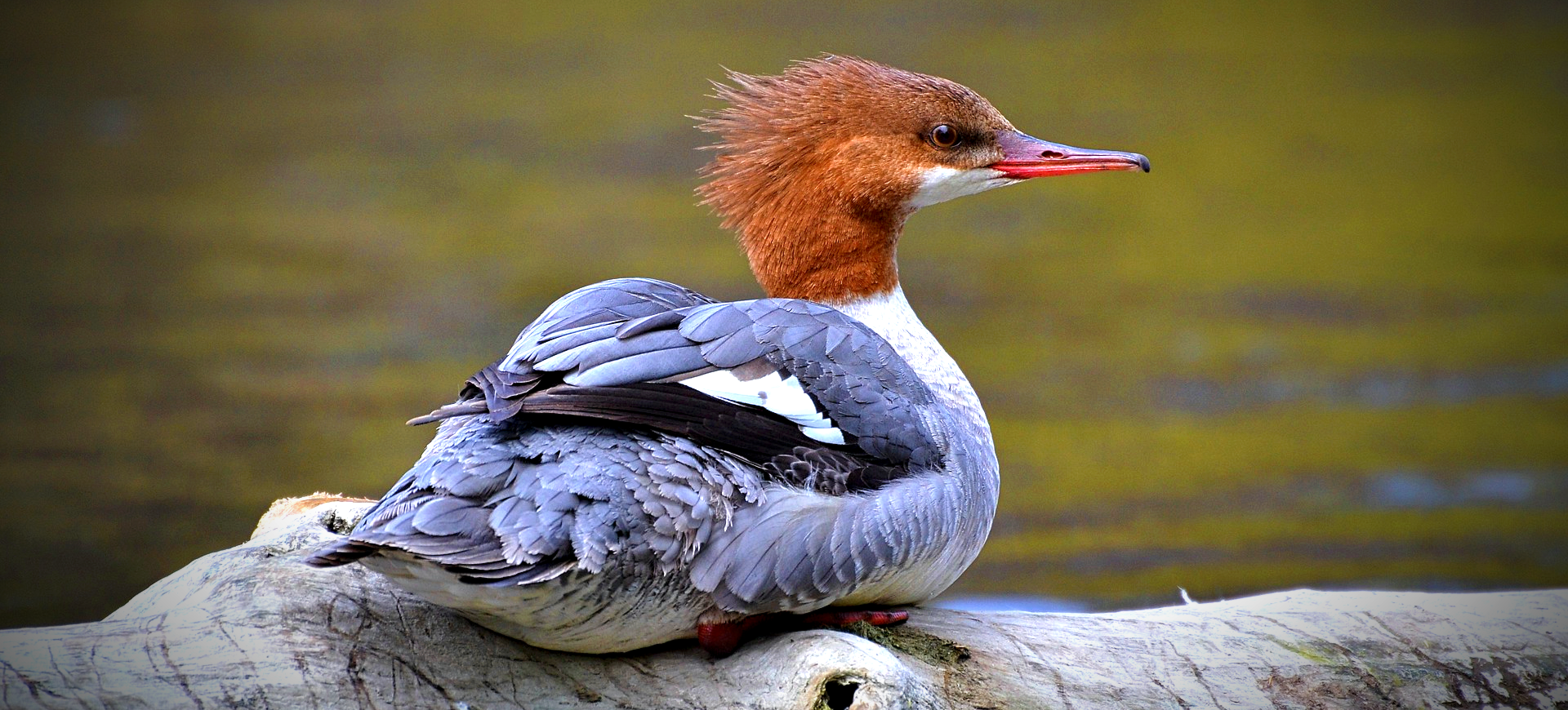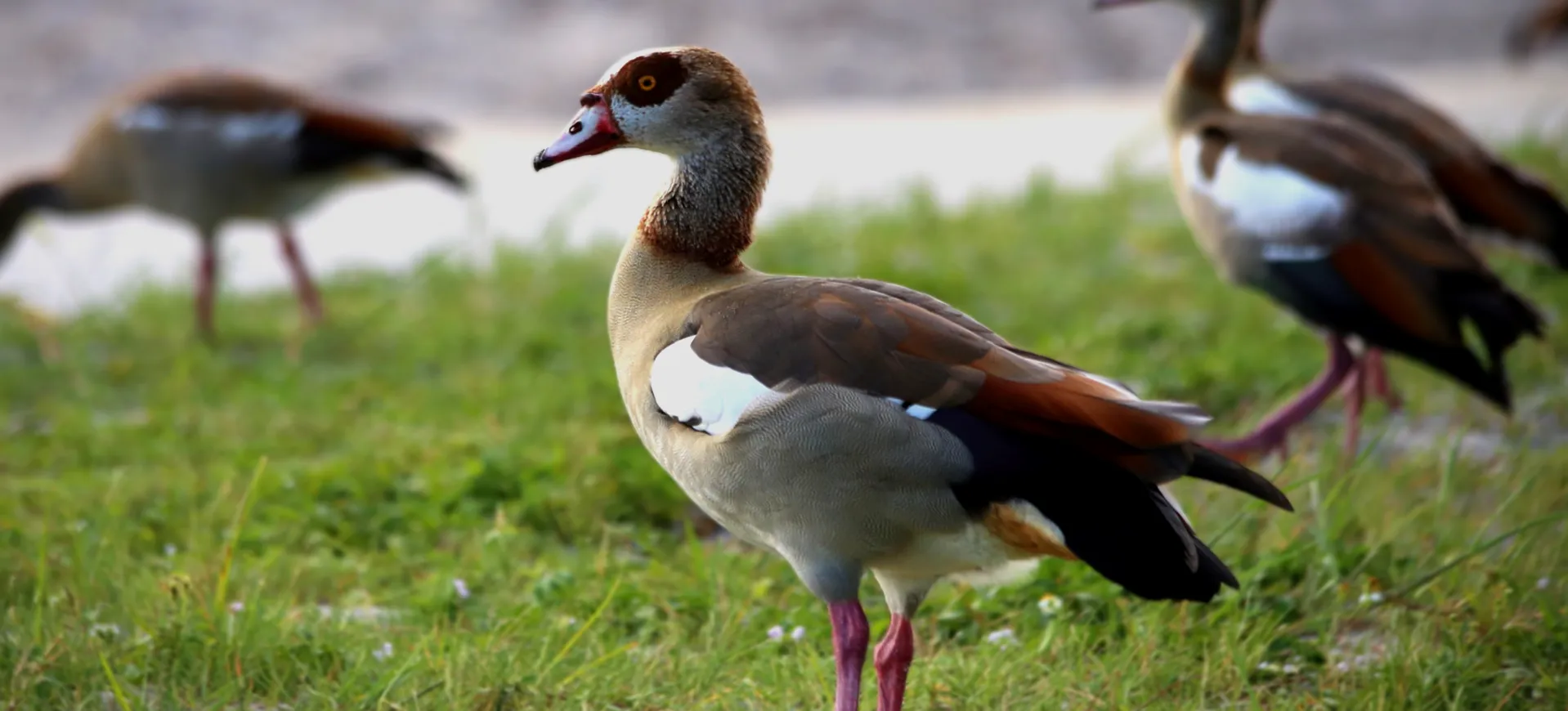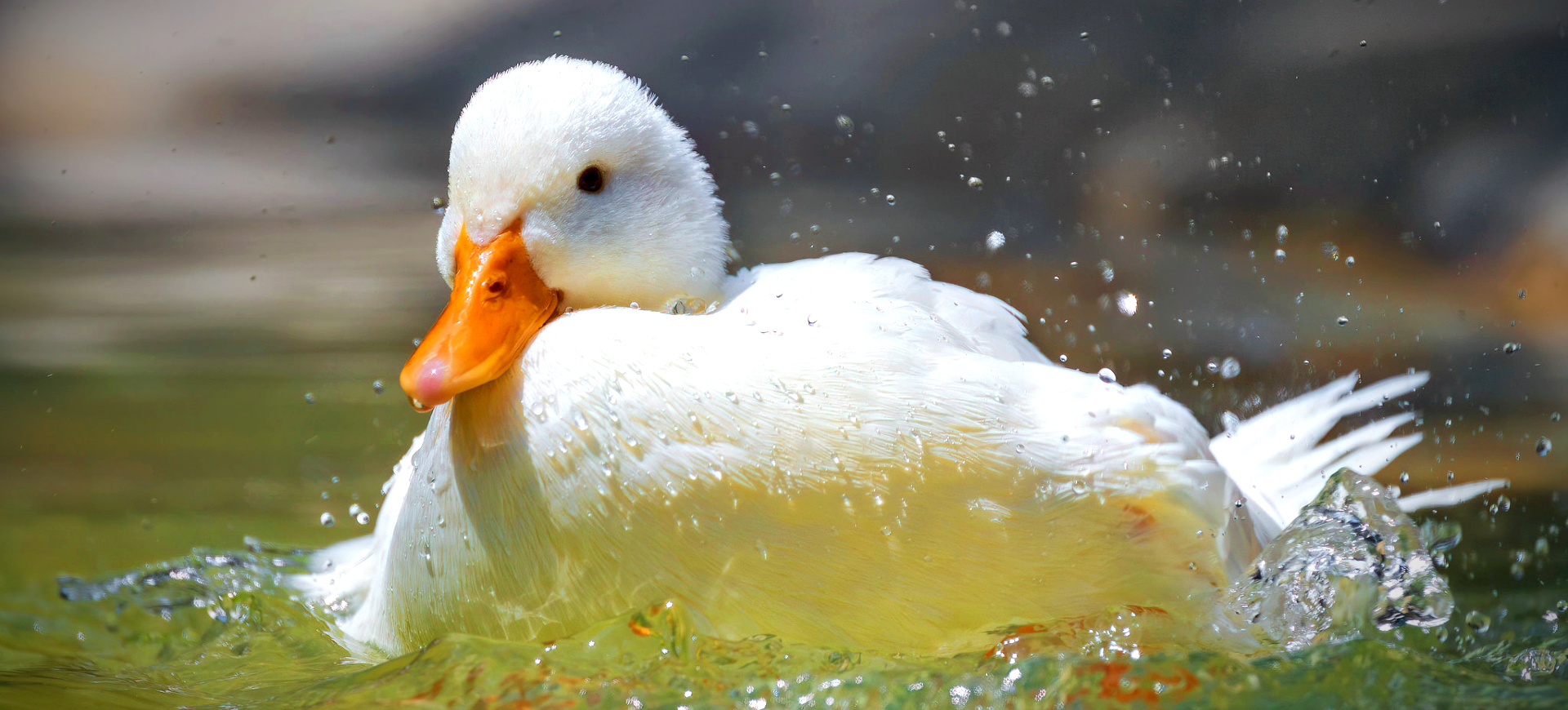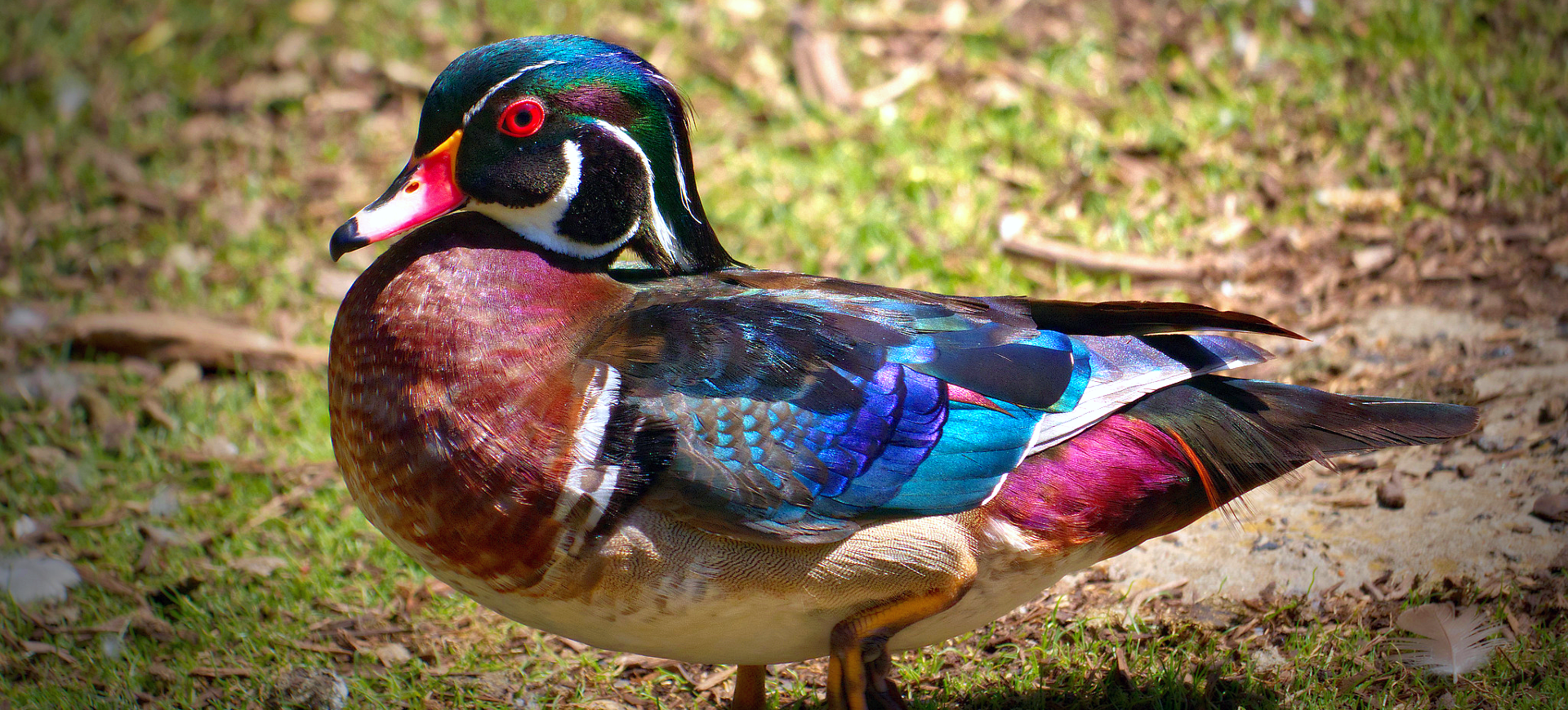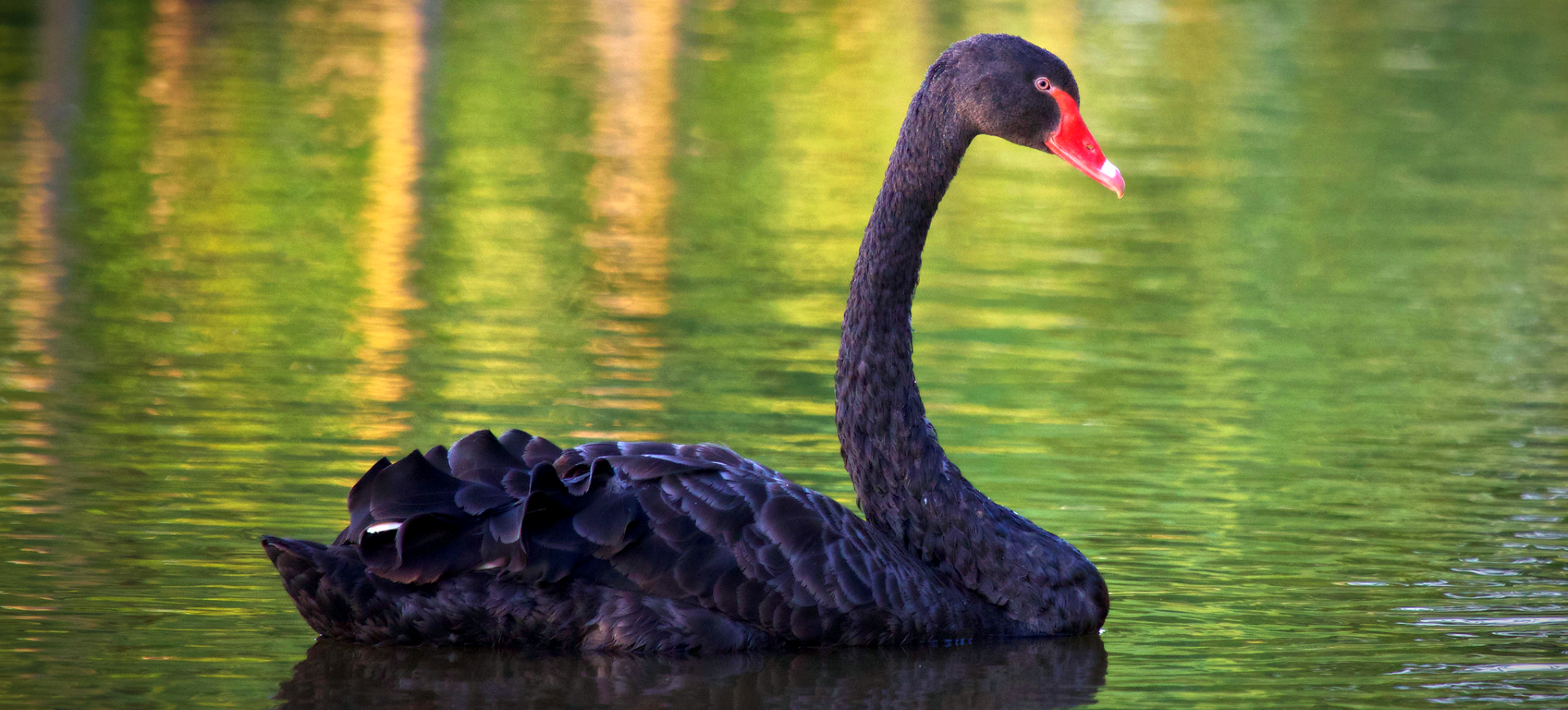Overview
The Lesser Whistling-Duck, scientifically known as Dendrocygna javanica, is a small, distinctive waterfowl. It is characterized by its long neck, upright stance, and a unique whistling call, from which it derives its common name. These ducks are predominantly brown with a chestnut rump and chest and a contrasting pale yellow eye-ring. Lesser Whistling-Ducks are known for their resilience and adaptability, able to thrive in various wetland habitats.
Lesser Whistling-Ducks are predominantly nocturnal, feeding and most active at night. They are social birds, often seen in flocks, and are known to form large congregations in favorable habitats. Their diet primarily consists of seeds, grains, aquatic plants, small fish, and invertebrates. During the day, these ducks often rest in sheltered areas, usually on water bodies with dense vegetation.
Found across a wide geographical range in Asia, the Lesser Whistling-Duck is a common sight in wetlands, freshwater lakes, and paddy fields. Its distribution spans the Indian subcontinent through Southeast Asia to the Greater Sundas and the Philippines. The species’ adaptability to human-altered landscapes like rice fields has helped it maintain stable populations in many regions despite habitat loss in some areas.
Taxonomy
Kingdom
Phylum
Class
Order
Family
Genus
Species
Type
Physical Description:
Lesser Whistling-Ducks have a streamlined body with a prominent long neck and a small head, giving them a distinctive silhouette. The plumage is mainly brown, with lighter underparts and a darker upper body. They have a characteristic chestnut patch on their breast and rump, and the legs and feet are a dull greyish-blue. The most notable feature is their pale yellow eye-ring, which stands out against their otherwise dark head.
These ducks measure about 16 to 18 inches long, with a wingspan reaching up to 30 inches. They have a unique, high-pitched whistling call, often heard in the evenings and a key characteristic of the species. In flight, Lesser Whistling-Ducks show a white wing stripe, and their long legs trail behind, adding to their distinctive appearance.

Lifespan: Wild: ~5 Years || Captivity: ~9 Years

Weight: Male: 1.1-1.2 lbs (0.5-0.55 kg) || Female: 1.0-1.1 lbs (0.45-0.50 kg)

Length: Male & Female: 16-18 in (40-45 cm)

Height: Male & Female: 16-18 in (40-45 cm)

Wingspan: Male & Female: 33-37 inches (85-93 cm)

Top Speed: 37 mph (60 km/h)
Characteristic:
Native Habitat:
Lesser Whistling-Ducks inhabit various wetland habitats, including freshwater swamps, marshes, lakes, and rice paddies. They prefer areas with abundant vegetation in and around the water, providing cover and feeding opportunities. These ducks are also found in brackish water environments, demonstrating their adaptability to different water salinities.
The species is adept at utilizing human-altered environments, particularly rice fields, which mimic their natural habitat. They are often seen in flooded agricultural areas, where they play a role in controlling pests and weeds. Their ability to thrive in diverse habitats has helped them maintain stable populations despite the ongoing loss and degradation of natural wetlands in their range.
Biogeographical Realms:
Continents:
Diet:
Diet & Feeding Habits:
Lesser Whistling-Ducks are omnivorous, with a diet that includes a variety of plant and animal matter. They predominantly feed on seeds, grains, and aquatic plants, which they forage from the water’s surface or by dabbling. Their diet is supplemented by small aquatic animals like fish, insects, and invertebrates, which provide essential proteins.
These ducks are nocturnal feeders, becoming active at dusk and continuing their foraging activities throughout the night. They often feed in groups, and their feeding habits can be seen in agricultural fields where they consume leftover grains and seeds. During the day, they rest in flocks in sheltered areas or float on water bodies. Their feeding behavior is adaptable, allowing them to thrive in natural wetlands and human-modified landscapes.
Mating Behavior:
Mating Description:
Lesser Whistling-Ducks are monogamous, forming pair bonds that may last for several breeding seasons. Courtship involves ritualized displays, including mutual preening and synchronized swimming. These displays strengthen the pair’s bond and are crucial for successful mating. Nest building is a joint effort, with both males and females participating.
Nesting typically occurs during the rainy season when water levels and food are abundant. The ducks prefer to nest in dense vegetation near water bodies, using reeds, grasses and leaves to construct their nests. After mating, the female lays a clutch of 6-12 eggs, which she incubates while the male guards the territory. The ducklings are precocial, able to swim and feed themselves shortly after hatching, but remain under parental care for several weeks.
Reproduction Season:
Birth Type:
Pregnancy Duration:
Female Name:
Male Name:
Baby Name:
Social Structure Description:
Lesser Whistling-Ducks are social birds, often found in flocks that can number in the hundreds or even thousands, especially during the breeding season. They exhibit strong social bonds, engaging in group activities like feeding and resting together. These flocks may mix with other waterfowl during the non-breeding season, indicating their tolerant nature.
The social structure of Lesser Whistling-Ducks is relatively loose, with pairs or small family groups often seen within larger congregations. They communicate through calls and displays, maintaining social bonds and coordinating activities. The social behavior of these ducks plays a crucial role in their survival, providing safety in numbers and increasing the efficiency of foraging.
Groups:
Conservation Status:
Population Trend:
Lesser Whistling-Ducks are widespread and relatively common throughout their range. Their populations are stable in many areas due to their adaptability and ability to thrive in human-modified landscapes like rice fields. They form large congregations in favorable habitats, particularly during the breeding season when they gather in wetlands and flooded fields.
Despite their current stable status, Lesser Whistling-Ducks face habitat loss and degradation threats, particularly in regions where wetlands are being converted for agriculture and urban development. Pollution, hunting, and disturbances at nesting sites also threaten local populations. However, their wide distribution and generalist nature have helped them maintain stable populations in many areas.
Population Threats:
The primary threats to Lesser Whistling-Ducks include habitat loss and degradation, particularly the destruction of wetlands for agricultural expansion and urban development. Agricultural runoff and industrial waste pollution can also impact their feeding and breeding grounds. Hunting and egg collection pose significant risks in some areas, affecting local populations.
Climate change is an emerging threat, potentially altering the distribution and availability of their wetland habitats. Rainfall patterns and water availability changes could impact their breeding and feeding areas. Despite these threats, their adaptability and wide distribution provide some resilience, but conservation efforts are needed to protect vital habitats and mitigate other threats.
Conservation Efforts:
Conservation efforts for Lesser Whistling-Ducks primarily focus on habitat protection and management. This includes the designation and maintenance of protected wetland areas and sustainable agriculture practices that benefit both wildlife and local communities. Environmental regulations and pollution control measures are also crucial for preserving the quality of their habitats.
Education and awareness programs help reduce disturbance and promote cooperation between humans and wildlife. Research and monitoring are essential for understanding population trends and the impacts of environmental changes. International cooperation is also vital, as the species’ range spans multiple countries, requiring coordinated efforts for effective conservation.
Additional Resources:
Fun Facts
- Lesser Whistling-Ducks get their name from their distinctive whistling call, often heard at night.
- They are one of the few primarily nocturnal duck species, feeding and most active after dusk.
- Unlike many other ducks, Lesser Whistling-Ducks have long legs, which trail behind them in flight.
- They can adapt to various habitats, including those altered by humans, such as rice paddies, which provide similar conditions to their natural wetland environments.
- In some cultures, the appearance of these ducks is associated with the onset of the monsoon season.
- They are known for their synchronized swimming and mutual preening during courtship.
- Due to their vocal nature, the species is part of the Dendrocygna genus, known as the whistling ducks.
- Lesser Whistling-Ducks often roost in trees at night, which is unusual for ducks.
- Their eggs are creamy white, and the clutch size can vary significantly depending on environmental conditions.
- Despite their widespread distribution, they are not typically kept in captivity and are best observed in their natural habitats.





